Pinaka Multiple Rocket Launch System (MRLS)
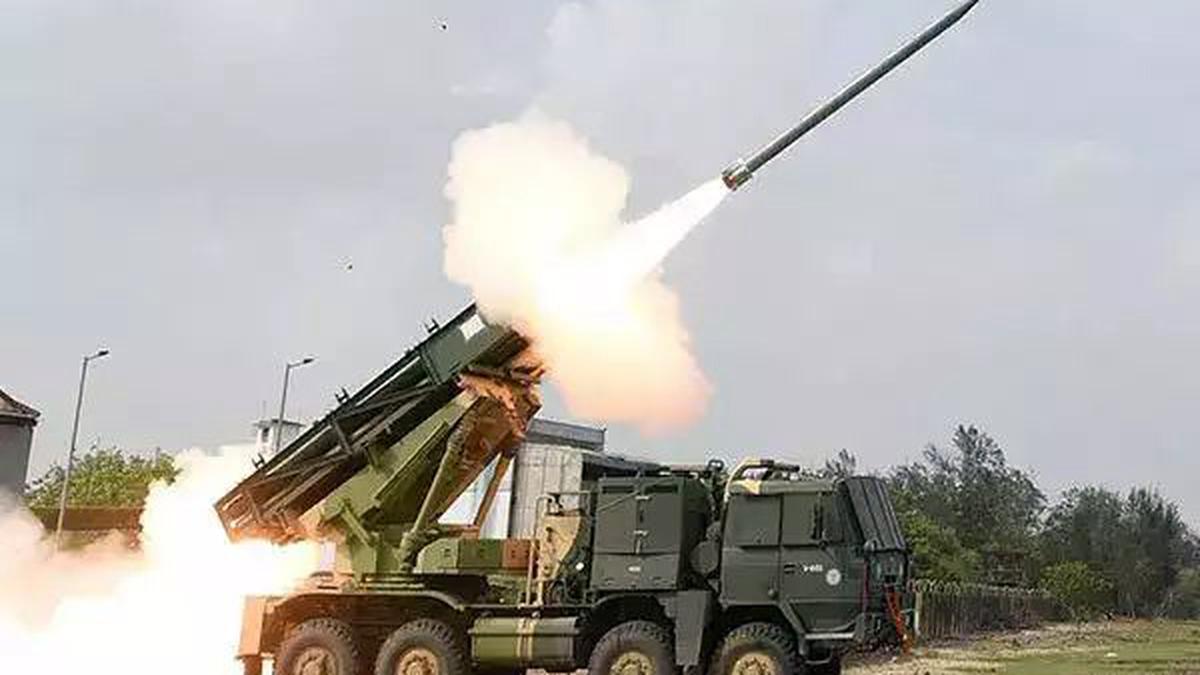
- 11 Feb 2025
In News:
In a significant step towards modernizing India's artillery capabilities, the Union Ministry of Defence signed contracts worth ?10,147 crore on February 6, 2025, for the procurement of advanced ammunition for the Pinaka Multiple Rocket Launch System (MRLS).
These agreements were concluded with Economic Explosives Limited (EEL) and Munitions India Limited (MIL) for the acquisition of Area Denial Munition (ADM) Type-1 and High Explosive Pre-Fragmented (HEPF)-Mk-1 (enhanced) rockets, respectively.
Pinaka MRLS: An Overview
- Type: All-weather, battle-proven, indirect fire Artillery Weapon System.
- Developer: Armament Research and Development Establishment (ARDE) of DRDO.
- Combat History: First used effectively during the Kargil War, neutralising enemy positions on mountain tops.
- Mobility: Mounted on Tatra trucks, providing high mobility and quick deployment.
- Payload & Firing Capacity:
- Each launcher: 12 rockets.
- Each battery: 6 launchers = 72 rockets.
- Capable of delivering a full salvo in 44 seconds.
- Range:
- Initial range: 60–75 km.
- Guided Pinaka (Pinaka-G) extends range to 75 km, with future plans to extend up to 120 km and eventually 300 km.
- Precision: The guided version uses INS/GPS navigation, allowing high accuracy against critical and time-sensitive targets.
- Warhead Types: High-explosive and submunitions, suitable for a wide variety of targets.
New Ammunition Contracts: Enhancing Lethality
The contracts include the procurement of:
- ADM Type-1: Equipped with specialised warheads designed to disperse sub-munitions over wide areas. These are effective in targeting mechanised formations, vehicles, and personnel, thereby denying area access to the enemy. These are similar to Dual Purpose Improved Conventional Munitions (DPICM).
- HEPF-Mk-1 (Enhanced): An advanced variant of the currently used HEPF rockets with extended range and improved lethality, capable of deep precision strikes in enemy territory.
In addition, a contract was signed with Bharat Electronics Limited (BEL) for upgrades to the Shakti software, which supports artillery operations.
Operational & Strategic Significance
- The upgraded Pinaka system will be the mainstay of long-range rocket artillery in the Indian Army.
- Four Pinaka regiments are already operational, with six more on order.
- The system’s development and expansion are a testament to India’s defenceindigenisation drive.
- The DRDO successfully completed flight tests of the guided Pinaka rocket with a range of 75 km, doubling its earlier reach. Future versions aim for up to 120 km and 300 km range.
Employment and MSME Impact
Besides enhancing strategic deterrence, the ?10,147 crore investment is expected to:
- Generate direct and indirect employment, particularly in the defence manufacturing ecosystem.
- Promote the Indian MSME sector, which contributes components and subsystems for the rockets and launchers.
- Support the vision of Atmanirbhar Bharat by reducing dependency on imported artillery systems.
Stryker Infantry Combat Vehicle
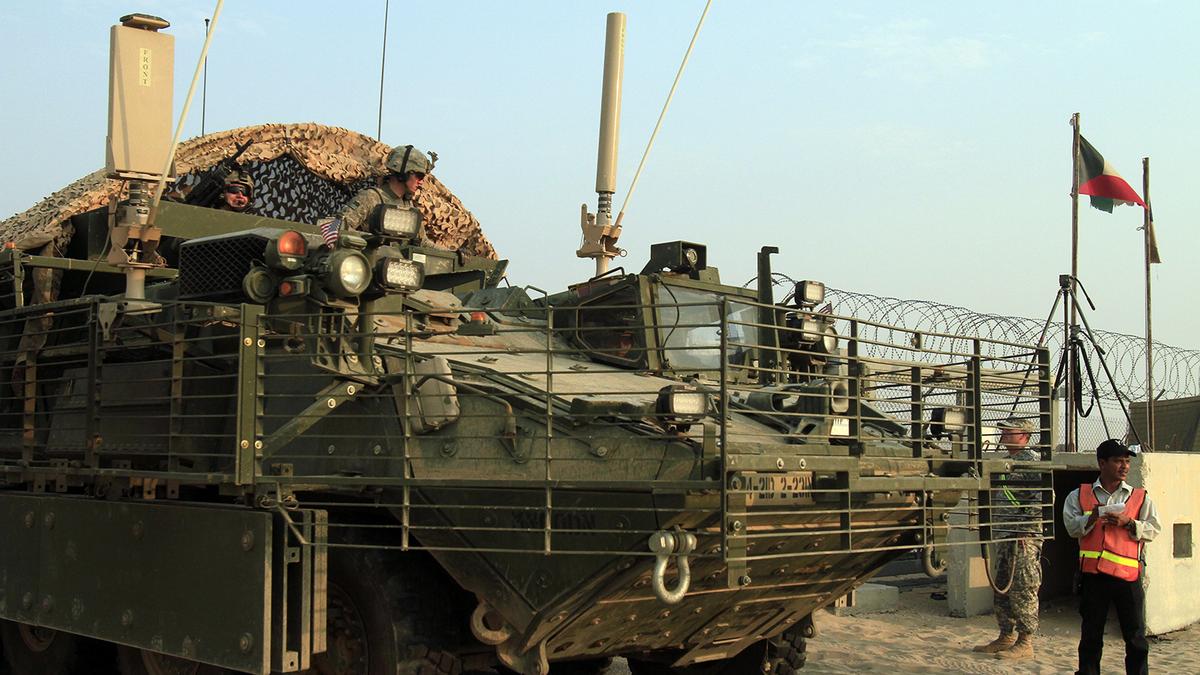
- 09 Feb 2025
In News:
India-U.S. defence cooperation is advancing with the proposed co-production of the Stryker Infantry Combat Vehicle (ICV). This deal represents a significant leap in bilateral defence industrial collaboration and aligns with India's strategic goal of military modernization and indigenisation under the ‘Make in India’ initiative.
About Stryker Infantry Combat Vehicle (ICV):
- Origin: Jointly developed by General Dynamics Land Systems (GDLS) Canada and U.S., it is the first new military vehicle inducted into U.S. Army service since the 1980s.
- Type: Eight-wheeled armoured infantry combat vehicle designed for rapid deployment and battlefield mobility.
- Variants: Includes Infantry Carrier Vehicle (ICV), Mobile Gun System (MGS), reconnaissance vehicle, medical evacuation vehicle, fire support vehicle, and Anti-Tank Guided Missile (ATGM) carrier.
Key Features:
- Mobility: Top speed of ~100 km/h and an operational range of 483 km. Can be airlifted using C-17 and C-130 aircraft (both in IAF’s fleet) or Chinook helicopters, enhancing deployment in remote terrains.
- Firepower: Equipped with a 30 mm cannon and a 105 mm mobile gun.
- Protection: V-hull structure for blast protection; composite armour reinforced with ceramic tiles offers increased survivability against IEDs and small arms.
- Capacity: Operated by a 2-member crew and can transport a 9-member infantry squad.
Operational Evaluation in India:
- High-Altitude Trials: Conducted in Ladakh (13,000–18,000 feet) during September–October 2024. Evaluation reports were shared with Army Headquarters for further review.
- Javelin ATGM Demonstration: Conducted alongside Stryker trials; however, the performance was sub-optimal due to the vintage system used. Repeat trials have been requested by India.
Strategic Importance for India:
- Tactical Advantage: Enhanced mobility and survivability in high-altitude warfare make it suitable for regions like Ladakh and Arunachal Pradesh.
- Border Security: Bolsters India's defence posture along sensitive frontiers with China and Pakistan.
- Force Modernization: Meets the Indian Army’s requirement for ICVs with integrated ATGM capabilities.
- Aatmanirbhar Bharat Push: The proposed model includes initial direct imports followed by large-scale license production in India, potentially by Bharat Earth Movers Limited (BEML).
Defence Diplomacy and Industrial Cooperation:
- The deal is being advanced under the India-U.S. Defence Industrial Cooperation Roadmap, focusing on co-development and co-production.
- In November 2023, Indian Defence Secretary confirmed discussions under this framework.
- The U.S. has reiterated the importance of India enhancing procurement of U.S.-made defence equipment, aiming at a balanced trade partnership.
- The Stryker deal is expected to feature in high-level bilateral dialogues, including the visit of Prime Minister Narendra Modi to Washington DC and during engagements at Aero India.
Challenges and Reservations:
- Some Indian defence officials have flagged concerns, noting that similar ICVs have been developed by Indian private companies.
- Delays in previous U.S. defence exports (e.g., F-404 jet engines for LCA-Mk1A) have also raised caution regarding timelines and reliability.
Iskander-M
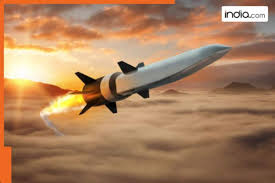
- 08 Feb 2025
In News:
In a significant defense development with wide-ranging geopolitical implications, the Russian Federation is preparing to mass-produce the Iskander-M tactical ballistic missile, a new-generation weapon system with enhanced range and destructive capabilities. This move is part of Russia’s broader strategy to upgrade its missile arsenal amid ongoing tensions with NATO, especially in the context of the Ukraine conflict.
Key Features and Strategic Purpose
The 9K720 Iskander-M, developed by the Machine-Building Design Bureau (Kolomna), is a medium-range tactical ballistic missile with an effective range of up to 1,000 kilometers. It is capable of delivering both conventional and nuclear warheads, making it a versatile and high-impact weapon in regional conflict scenarios.
- The missile is precision-targeted and designed to neutralize high-value enemy assets, including NATO’s military infrastructure in Eastern Europe, especially in Ukraine.
- The production of the upgraded missile, unofficially referred to as the Iskander-1000, is expected to begin in full swing by 2025.
- The missile is reported to be highly destructive, with the ability to conduct deep strikes with minimal detection, offering Russia a tactical advantage in asymmetric warfare.
Deployment of Oreshnik Missile Systems in Belarus
In a parallel development, Russia has confirmed the deployment of Oreshnik medium-range ballistic missile systems in Belarus, a strategic ally. This decision follows agreements between the Russian and Belarusian leadership, reinforcing the military integration under their collective defense pact.
- The Oreshnik system, though less publicly detailed than the Iskander, is designed for tactical use and contributes to enhancing Russia’s regional defense shield.
- According to Russian foreign ministry officials, Belarus already hosts a joint Regional Forces Group, non-strategic nuclear weapons, and modern Russian defense systems.
- The positioning of these systems near NATO’s eastern borders heightens tensions with Western powers, particularly the United States, Poland, the Baltic States, and the European Union.
Geopolitical Ramifications
The Iskander-M and Oreshnik missile programs are part of Russia’s strategic doctrine to deter NATO's influence and reassert its military dominance in Eastern Europe. These deployments are:
- Likely to escalate NATO-Russia tensions, increasing the risk of a regional arms race.
- Expected to complicate European security dynamics, especially in Poland, Ukraine, and the Baltic states, which are seen as potential frontlines.
- Raising the prospect of further military escalation in the ongoing Russia-Ukraine conflict.
- Prompting NATO countermeasures, including deployment of missile defense systems and increased troop presence near Eastern borders.
India-Maldives Joint Military Exercise ‘Ekuverin’
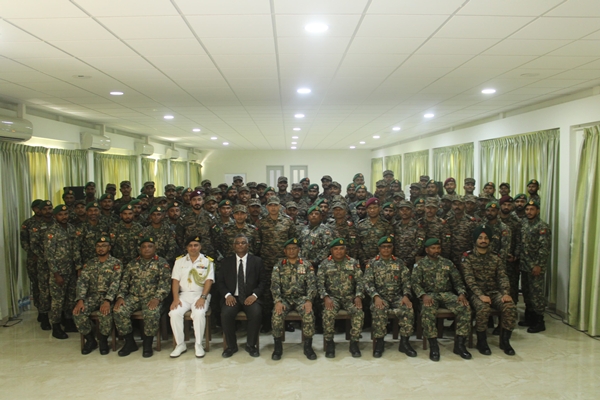
- 05 Feb 2025
In News:
The 13th edition of Exercise Ekuverin, a bilateral joint military exercise between the Indian Army and the Maldives National Defence Force (MNDF), commenced in the Maldives on February 4, 2025. The exercise continues to reinforce defence and strategic ties between the two nations.
About Exercise Ekuverin
- Name Meaning: “Ekuverin” means ‘Friends’ in Dhivehi, the official language of the Maldives—symbolizing the deep and friendly defence partnership between India and the Maldives.
- First Conducted: The exercise was initiated in 2009 as part of annual bilateral defence cooperation.
- Venue Alternation: It is held alternatively in India and the Maldives every year.
- 2023 Edition: Conducted at Chaubatia, Uttarakhand from June 11 to 24.
- 2025 Edition: Being hosted in the Maldives.
Key Objectives and Features
- Military Interoperability: Enhances coordination and operational synergy between Indian and Maldivian armed forces.
- Counter-Insurgency and Counter-Terrorism (CI/CT): Focuses on joint tactical drills to counter modern asymmetric threats.
- Humanitarian Assistance and Disaster Relief (HADR): Equips forces to respond effectively to natural disasters and humanitarian crises.
- Strengthening IOR Security: Reinforces regional maritime and strategic stability in the Indian Ocean Region (IOR), a key area of India’s strategic interest.
Significance for India-Maldives Relations
- Strategic Partnership: Builds mutual trust and defence preparedness, aligning with India’s “Neighbourhood First” policy.
- Capacity Building: Helps enhance the capability of the MNDF through joint training with a larger and more experienced Indian Army.
- Regional Security Cooperation: Plays a crucial role in maintaining peace, security, and freedom of navigation in the IOR.
India’s Defence Engagement with Southeast Asia
India actively conducts multiple bilateral and multilateral defence exercises with Southeast Asian countries to enhance defence diplomacy and promote a free, open, and secure Indo-Pacific.
Key Defence Exercises with Southeast Asian Nations:
- Garuda Shakti: Special Forces exercise with Indonesia (Nov 2022, Sangga Buana Training Area).
- Mitra Shakti: Annual exercise with Sri Lanka, last held in 2022.
- VINBAX: India-Vietnam bilateral exercise; 3rd edition held in 2022.
- IMBEX: India-Myanmar bilateral exercise (last noted in 2017–18).
- Maitree: Joint annual military exercise with Thailand, conducted since 2006.
- CORPAT: Coordinated Patrols with Indonesia, Thailand, and Malaysia for maritime domain awareness and security.
- AIME 2023: The first ASEAN-India Maritime Exercise, conducted in May 2023, involving navies from India and ASEAN nations (Brunei, Indonesia, Malaysia, Philippines, Singapore, Thailand, Vietnam).
Aero India 2025
- 28 Jan 2025
In News:
Aero India 2025, the 15th edition of India’s premier aerospace and defence exhibition, is scheduled from February 10–14, 2025, at the Yelahanka Air Force Station, Bengaluru.
Organised by the Ministry of Defence and the Defence Exhibition Organisation (DEO), the event continues to be a vital forum for promoting India's indigenous defence capabilities and fostering international collaboration.
Evolution of Aero India: From Showcase to Strategic Asset
- Inception (1996): Launched as a modest exhibition to attract foreign investments and highlight India’s aerospace potential.
- Growth Phase (2005–2015): Marked by the entry of global giants like Boeing, Airbus, Lockheed Martin, and Dassault Aviation. Indigenous platforms like LCA Tejas began gaining prominence.
- Current Phase (2015–Present): Aligned with ‘Make in India’ and ‘Aatmanirbhar Bharat’, Aero India has become a symbol of India's defence self-reliance and a magnet for global partnerships.
Aero India 2025 Highlights
1. International Participation and Strategic Displays
- Participation from 15+ countries and major OEMs.
- Russia’s Su-57 and USA’s F-35—two of the world’s most advanced 5th-generation fighters—will be showcased together, reflecting India’s growing strategic importance.
- Other prominent platforms: KC-135 Stratotanker, Embraer C-390, and Light Combat Helicopter Prachand.
2. Indigenous Innovation
- Advanced Medium Combat Aircraft (AMCA): India’s 5th-generation stealth fighter, developed by HAL and ADA, will be unveiled.
- Indigenous platforms like LCA Mk2, LUH, HTT-40, ALH, and Naval Twin-Engine Deck-Based Fighter will also be featured.
3. Start-Up Integration via 'Manthan'
- Through the iDEX initiative, Aero India is promoting start-ups working in AI, unmanned systems, cybersecurity, and electronic warfare.
- Start-ups will showcase innovations including jetpack suits, robotics, and defence software tools.
4. Business & Public Engagement
- Business Days: February 10–12, 2025
- Public Days: February 13–14, 2025
- Over 7 lakh visitors expected; the event offers aerial displays, seminars, tech expos, and networking forums.
5. Defence Diplomacy and Deals
- Aero India 2023 had seen over ?80,000 crore worth of MoUs. A similar or higher scale of defence agreements is expected in 2025.
- High-level participation from defence ministers, air chiefs, and CEOs of OEMs, signalling deepening international defence cooperation.
Strategic Significance for India
- Geopolitical Leverage: Participation of both US and Russian defence firms signals India’s strategic autonomy and balanced defence diplomacy.
- Self-Reliance Boost: The event enhances domestic manufacturing by integrating MSMEs, promoting co-development and co-production with foreign partners.
- Global Recognition: Positions India as an emerging aerospace hub in the Indo-Pacific.
- Technological Edge: Demonstrates advancements in stealth technology, avionics, and unmanned systems.
Theme of Aero India 2025: “The Runway to a Billion Opportunities” — highlighting India’s expanding defence manufacturing capabilities and its aim to integrate with the global supply chain.
Sanjay Battlefield Surveillance System
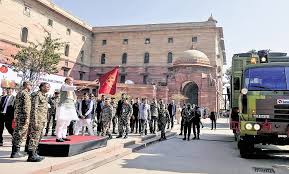
- 25 Jan 2025
In News:
Defence Minister Rajnath Singh recently flagged off Sanjay, an indigenously developed Battlefield Surveillance System (BSS), to be inducted into the Indian Army in phased manner from March to October 2025, designated as the ‘Year of Reforms’ by the Ministry of Defence.
Overview:
- Nature: Automated surveillance system
- Purpose: To integrate real-time data from ground and aerial sensors, enabling swift, informed decision-making in conventional and sub-conventional warfare scenarios.
Key Features:
- Common Surveillance Picture (CSP): Fuses verified sensor data to generate a real-time surveillance image of the battlefield.
- Real-time Integration & Analytics: Processes inputs using advanced analytics to eliminate duplication and enhance situational awareness.
- Secure Networks: Operates over the Indian Army’s Data Network and Satellite Communication Network, ensuring reliable and secure data flow.
- Centralized Web Application: Provides integrated inputs to Command Headquarters and Army HQ through a unified platform, supporting the Indian Army's Decision Support System.
- Indigenous Development: Jointly developed by the Indian Army and Bharat Electronics Limited (BEL) under the Buy (Indian) category, promoting Aatmanirbharta in defense.
Operational Significance:
- Enhances battlefield transparency, situational awareness, and surveillance capabilities along vast and sensitive land borders.
- Functions as a force multiplier in Intelligence, Surveillance & Reconnaissance (ISR) operations.
- Enables network-centric warfare, marking a shift towards data-driven military operations.
Deployment:
- To be inducted into all Brigades, Divisions, and Corps of the Army in three phases (March–October 2025).
Scramjet & Hypersonic Technology
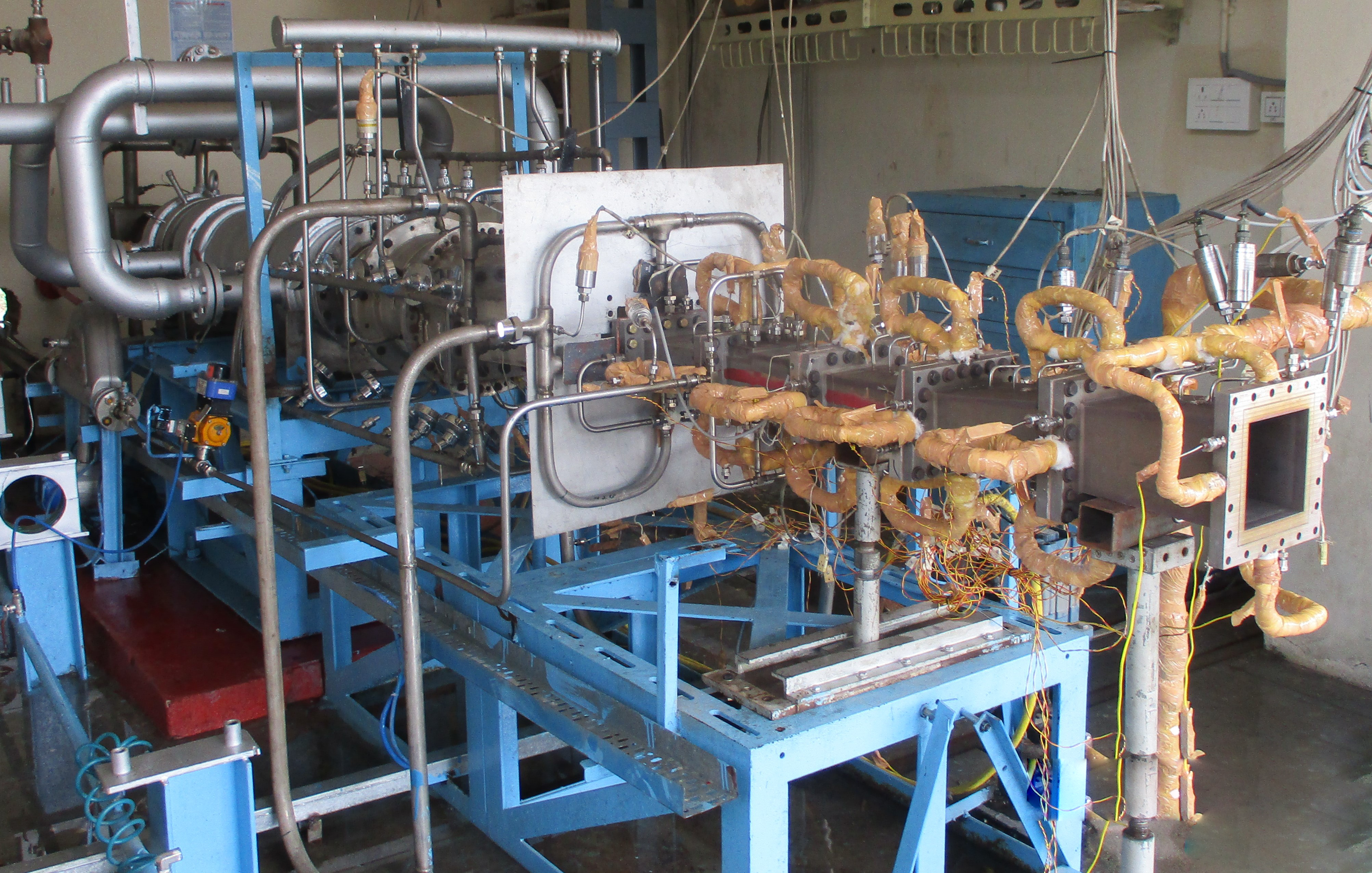
- 23 Jan 2025
In News:
On 21 January 2025, DRDO’s Defence Research & Development Laboratory (DRDL) successfully conducted a 120-second ground test of an indigenously developed Scramjet (Supersonic Combustion Ramjet) engine, marking a major milestone in India’s journey towards hypersonic missile technology.
What is Scramjet Technology?
Definition
A Scramjet is an air-breathing engine that sustains combustion at supersonic speeds—optimized for speeds above Mach 5 (hypersonic range).
Working Principle
- Utilizes vehicle’s forward motion to compress incoming air—no onboard oxidizer needed.
- Injects fuel into the compressed supersonic airflow → ignition → high-speed thrust.
- Operates without moving parts, making it lightweight, efficient, and reliable.
Key Indigenous Innovations
Feature Description
Active-Cooled Combustor Stable combustion achieved at 1.5 km/s airflow, comparable to "keeping a candle lit in a hurricane."
Endothermic Scramjet Fuel First-time development in India; offers cooling + ignition efficiency.
Thermal Barrier Coating (TBC) Jointly developed with DST; withstands temperatures beyond melting point of steel using advanced ceramic coating.
CFD Simulations Used for design optimization and performance validation of flame-holding techniques.
Significance of Scramjet Test
- Stable Combustion: A major challenge in hypersonic propulsion, now successfully demonstrated.
- Hypersonic Missiles:
- Speeds >Mach 5 (~5400 km/h).
- Bypass air defence systems due to speed and maneuverability.
- Enable rapid, high-impact delivery.
- Reusable Launch Vehicles:
- Cuts satellite launch costs via air-breathing propulsion.
- Strategic Edge:
- India joins elite group: USA, Russia, China.
- Strengthens defence deterrence & technological sovereignty.
- Technology Spillover: Advancements in CFD, materials science, flame stabilization, and fuel chemistry.
Global Hypersonic Race
- China (2021): Tested nuclear-capable hypersonic glide vehicle (HGV) that orbited Earth before hitting target.
- USA & Russia: Advanced programs with operational hypersonic systems (e.g., Avangard, Zircon, ARRW).
- India: Now developing indigenous hypersonic missile platform.
Scramjet & Hypersonic Technology

- 23 Jan 2025
In News:
On 21 January 2025, DRDO’s Defence Research & Development Laboratory (DRDL) successfully conducted a 120-second ground test of an indigenously developed Scramjet (Supersonic Combustion Ramjet) engine, marking a major milestone in India’s journey towards hypersonic missile technology.
What is Scramjet Technology?
Definition
A Scramjet is an air-breathing engine that sustains combustion at supersonic speeds—optimized for speeds above Mach 5 (hypersonic range).
Working Principle
- Utilizes vehicle’s forward motion to compress incoming air—no onboard oxidizer needed.
- Injects fuel into the compressed supersonic airflow → ignition → high-speed thrust.
- Operates without moving parts, making it lightweight, efficient, and reliable.
Key Indigenous Innovations
Feature Description
Active-Cooled Combustor Stable combustion achieved at 1.5 km/s airflow, comparable to "keeping a candle lit in a hurricane."
Endothermic Scramjet Fuel First-time development in India; offers cooling + ignition efficiency.
Thermal Barrier Coating (TBC) Jointly developed with DST; withstands temperatures beyond melting point of steel using advanced ceramic coating.
CFD Simulations Used for design optimization and performance validation of flame-holding techniques.
Significance of Scramjet Test
- Stable Combustion: A major challenge in hypersonic propulsion, now successfully demonstrated.
- Hypersonic Missiles:
- Speeds >Mach 5 (~5400 km/h).
- Bypass air defence systems due to speed and maneuverability.
- Enable rapid, high-impact delivery.
- Reusable Launch Vehicles:
- Cuts satellite launch costs via air-breathing propulsion.
- Strategic Edge:
- India joins elite group: USA, Russia, China.
- Strengthens defence deterrence & technological sovereignty.
- Technology Spillover: Advancements in CFD, materials science, flame stabilization, and fuel chemistry.
Global Hypersonic Race
- China (2021): Tested nuclear-capable hypersonic glide vehicle (HGV) that orbited Earth before hitting target.
- USA & Russia: Advanced programs with operational hypersonic systems (e.g., Avangard, Zircon, ARRW).
- India: Now developing indigenous hypersonic missile platform.
Exercise La Perouse 2025
- 19 Jan 2025
In News:
India is participating in the fourth edition of the multinational naval exercise La Perouse, hosted by France in key maritime straits—Malacca, Sunda, and Lombok. The Indian Navy's INS Mumbai, an indigenously built guided-missile destroyer, represents India.
Key Highlights:
- Participating Countries: Navies from India, France, Australia, USA, UK, Indonesia, Malaysia, Singapore, and Canada.
- Objectives:
- Enhance maritime situational awareness.
- Promote tactical interoperability through joint training.
- Conduct surface warfare, anti-air warfare, air defence, and VBSS (Visit, Board, Search and Seizure) operations.
- Strengthen cooperation on maritime surveillance, air operations, and information sharing.
- Significance:
- Demonstrates commitment to a rules-based international order in the Indo-Pacific.
- Reflects India’s vision of SAGAR (Security and Growth for All in the Region).
- Counters increasing presence of Chinese naval forces in the Indo-Pacific.
Strategic Location: Key Straits in Focus
- Strait of Malacca
- Connects: Andaman Sea (Indian Ocean) to South China Sea (Pacific Ocean).
- Geography: Lies between Peninsular Malaysia and Sumatra, near Singapore.
- Significance: One of the world’s busiest trade routes.
- Choke Point: Narrowest part (Philips Channel) is only 2.8 km wide.
- Sunda Strait
- Connects: Java Sea (Pacific) to the Indian Ocean.
- Between: Java and Sumatra (Indonesia).
- Challenges: Volcanic islands (e.g., Krakatoa), shallow depths (20–100 m).
- Importance: Secondary maritime route, strategic in times of congestion in Malacca.
- Lombok Strait
- Connects: Java Sea to the Indian Ocean.
- Between: Bali and Lombok islands.
- Depth: 250–1,300 meters – suitable for large vessels.
- Unique Feature: Part of the Wallace Line, a major ecological boundary.
Bharat Ranbhoomi Darshan

- 17 Jan 2025
In News:
The Bharat Ranbhoomi Darshan initiative, launched by Defence Minister coinciding with the 77th Army Day celebrations, is a collaborative effort between the Ministry of Defence and the Ministry of Tourism.
Key Highlights:
- This initiative is designed to promote battlefield and border tourism by providing citizens with access to historically significant battlefields and military sites.
Objectives
- Promote Battlefield and Border Tourism: Encourage citizens and tourists to explore India's military history.
- Enhance Awareness: Educate visitors about India’s historic battles and military valor.
- Socio-Economic Development: Boost infrastructure, connectivity, and local economies in border regions.
Features of Bharat Ranbhoomi Darshan
- Virtual Tours and Interactive Content: The platform offers historical narratives, virtual tours, and interactive multimedia to provide a detailed account of each battlefield.
- Travel Planning Assistance: Visitors can access information regarding permits, travel routes, and accommodations.
- Integration with the Incredible India Campaign: The initiative is part of the government’s broader tourism strategy, ensuring widespread promotion.
- Collaborative Infrastructure Development: The Indian Army is working with local civil authorities to facilitate safe tourism without compromising operational preparedness.
Key Locations Covered
- Galwan Valley (Ladakh): Site of the 2020 India-China clash.
- Doklam: A tri-junction between India, Bhutan, and China.
- Line of Control (LoC) and Line of Actual Control (LAC) Sites:
- Nathu La Pass (Sikkim): Significant in the 1967 Indo-China clashes.
- Longewala (Rajasthan): Site of a key battle during the 1971 Indo-Pak war.
- Other Sites: Locations of the 1962 war with China and various Indo-Pak conflicts.
Significance
- Historical and Patriotic Engagement: Provides citizens firsthand insights into the challenges faced by soldiers in remote, strategic locations.
- Tourism Development in Border Areas: Previously restricted areas now open for visitors, leading to economic benefits for local communities.
- National Security Awareness: Encourages greater appreciation of India's defense forces and their contributions.
Implementation
The first phase of the Bharat Ranbhoomi Darshan project includes key battlefields and border sites across seven major regions. Future phases will expand coverage to additional historical military locations.
Sonobuoys
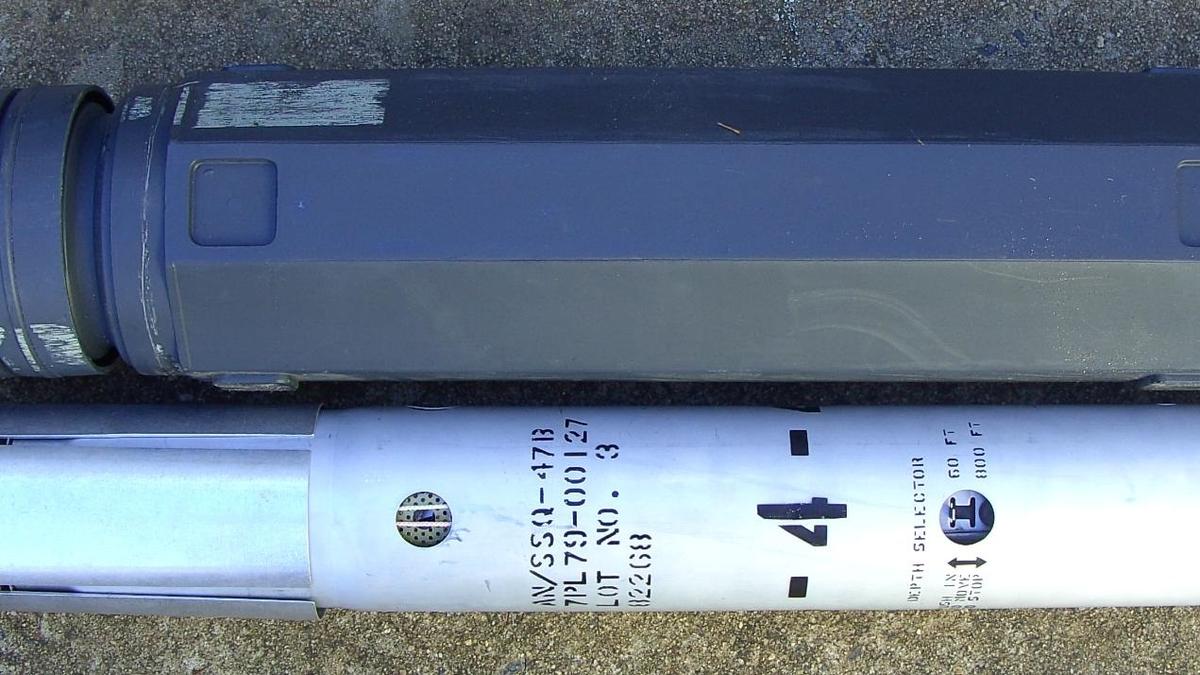
- 08 Jan 2025
In News:
India and the U.S. have announced cooperation on the co-production of U.S. sonobuoys to enhance Undersea Domain Awareness (UDA) for the Indian Navy. This technology is vital for tracking submarines and strengthening defense capabilities, particularly in the Indian Ocean region amidst growing Chinese naval presence.
This partnership is a key step in deepening defense cooperation under the U.S.-India Initiative on Critical and Emerging Technologies (iCET), launched in May 2022, and will contribute to strengthening both countries’ defense industrial bases.
About Sonobuoys
- What They Are:
- Sonobuoys are expendable sonar devices used for anti-submarine warfare and underwater acoustic research.
- Typically, small (13 cm in diameter and 91 cm in length), they are designed for deployment from aircraft or ships to detect submarines in deep waters.
- Working Principles:
- Deployment: Dropped from aircraft or ships, they activate upon water impact.
- Surface Float: Equipped with inflatable floats and radio transmitters to communicate with tracking platforms on the surface.
- Sensors: Hydrophones descend to selected depths, capturing underwater acoustic signals.
- Data Communication: Transmit acoustic data via Very High Frequency (VHF) or Ultra High Frequency (UHF) radios to operators on aircraft or ships.
- Types of Sonobuoys:
- Active Sonobuoys: Emit sound energy and receive echoes, transmitting the data back to operators.
- Passive Sonobuoys: Only listen for underwater sounds from submarines or ships and relay the information back.
- Special Purpose Sonobuoys: Measure environmental data like water temperature and ambient noise.
- Other Applications:
- Beyond anti-submarine warfare, sonobuoys are used for environmental research, including studying marine life such as whales.
Co-production of Sonobuoys: India-U.S. Collaboration
- Manufacturing Agreement:
- Ultra Maritime (U.S.) and Bharat Dynamics Ltd. (BDL) have entered into discussions to co-produce U.S. sonobuoys, in line with India’s "Make in India" initiative.
- The production will follow U.S. Navy standards, with manufacturing split between the U.S. and India.
- The focus will also be on developing bespoke technologies to optimize sonobuoy performance in the unique acoustic environment of the Indian Ocean.
- Interoperability:
- The sonobuoys co-produced in India will be interoperable between U.S. Navy, Indian Navy, and allied aircraft such as P-8, MH-60R, and MQ-9B Sea Guardian.
- This ensures seamless integration and compatibility with naval assets from the U.S., India, Japan, and Australia, especially given the Quad's strategic naval exercises like Malabar.
- Production Location:
- The sonobuoys will be manufactured at BDL's facilities in Visakhapatnam, with a focus on meeting the Indian Navy’s operational demands.
Strategic and Defense Context
- U.S. and Indian Naval Cooperation:
- India has increasingly acquired military platforms from the U.S., such as the P-8I maritime patrol aircraft, MH-60R helicopters, and MQ-9 drones. These assets are also used by other Quad nations like Australia and Japan, highlighting the importance of interoperability and shared defense capabilities in the region.
- Enhanced Maritime Domain Awareness:
- With China’s growing naval presence in the Indian Ocean, the cooperation on sonobuoys aligns with India’s strategic priority of enhancing maritime domain awareness (MDA) and Undersea Domain Awareness (UDA), which are critical for national security.
- Future Plans:
- India has also signed a $3.5 billion contract for 31 MQ-9B drones, enhancing its surveillance capabilities for maritime and other defense applications. Deliveries of these drones will begin in 2029, further boosting India’s defense readiness in the region.
INS Tushil Commissioned into the Indian Navy in Russia
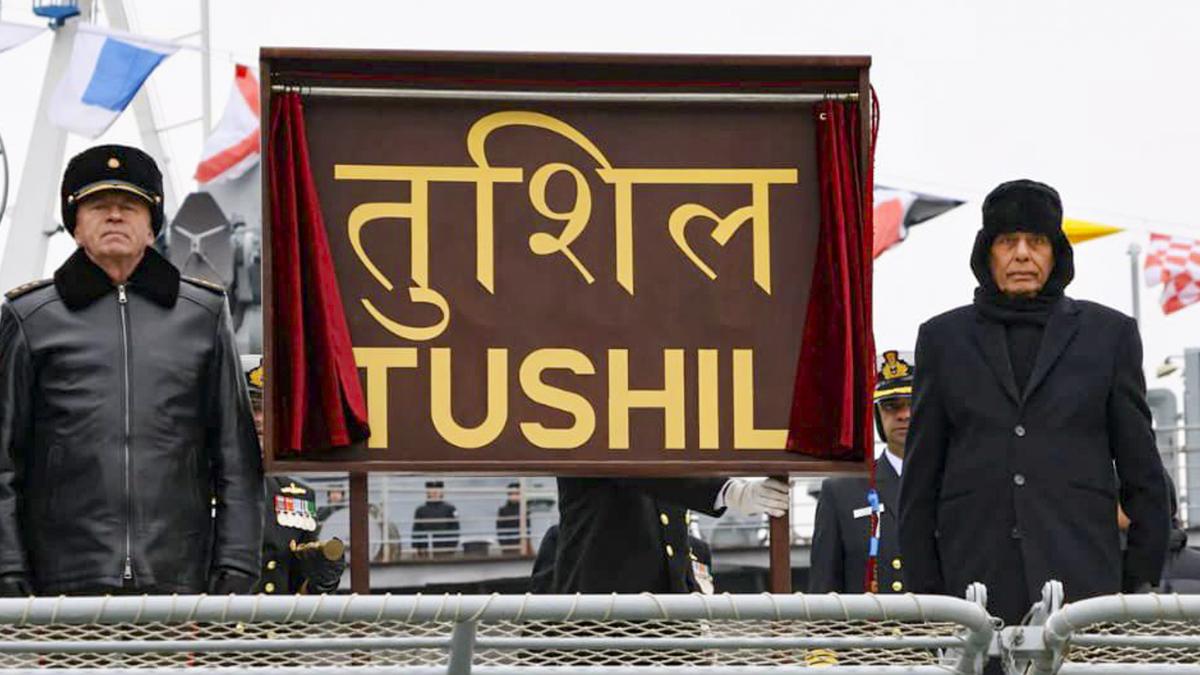
- 10 Dec 2024
In News:
Recently, the Indian Navy officially commissioned INS Tushil, a multi-role stealth guided missile frigate, at Kaliningrad, Russia. This marks a significant milestone in India-Russia defense cooperation and strengthens India’s maritime capabilities.
About INS Tushil:
- Class & Design: INS Tushil is the seventh ship in the Krivak III class (Project 1135.6) of frigates. It is part of an upgraded series, following the Talwar-class and Teg-class frigates, and was built at the Yantar Shipyard in Kaliningrad, Russia.
- Development & Contract: The construction was initiated under a 2016 contract between the Indian Government, JSC Rosoboronexport (a Russian defense company), and the Indian Navy. The ship incorporates 26% indigenous technology, highlighting growing cooperation between Indian and Russian industries.
- Key Features:
- Stealth Design: With advanced radar-absorbing features, it is less detectable by enemy radar.
- Weaponry: Equipped with BrahMos supersonic cruise missiles, Shtil Surface-to-Air Missiles, anti-submarine torpedoes, electronic warfare systems, and more.
- Versatility: Designed for blue-water operations, the ship can engage in air, surface, underwater, and electromagnetic warfare.
- Helicopter Deck: Supports operations of upgraded Kamov 28 and Kamov 31 helicopters.
- Speed: Capable of exceeding 30 knots.
Significance:
- Enhanced Naval Capabilities: The commissioning of INS Tushil boosts India’s defense strength in the Indian Ocean Region (IOR), a vital area for global maritime trade and security.
- Maritime Security: INS Tushil is designed to support India’s vision of maintaining stability in the IOR and to act as a deterrent against piracy and other maritime threats.
- Defense Cooperation: This commissioning exemplifies the growing defense ties between India and Russia, underscored by joint development, technology transfer, and shared expertise. The ship reflects a major step in India's self-reliance in defense, in line with the “Aatmanirbhar Bharat” initiative.
- Strategic Role in Global Defense: The ship is a key asset in the Indian Navy's efforts to secure maritime trade routes, enhance regional security, and provide humanitarian assistance in times of need.
Key Events & Facts:
- Construction Timeline: The keel of INS Tushil was laid in 2013, and it launched in 2021. After completing extensive sea and weapon trials in 2024, it was formally commissioned into the Navy.
- Collaborative Effort: The ship is a product of collaborative efforts between Indian and Russian industries, marking a significant achievement in joint defense manufacturing.
26 Rafale-Marine Jets
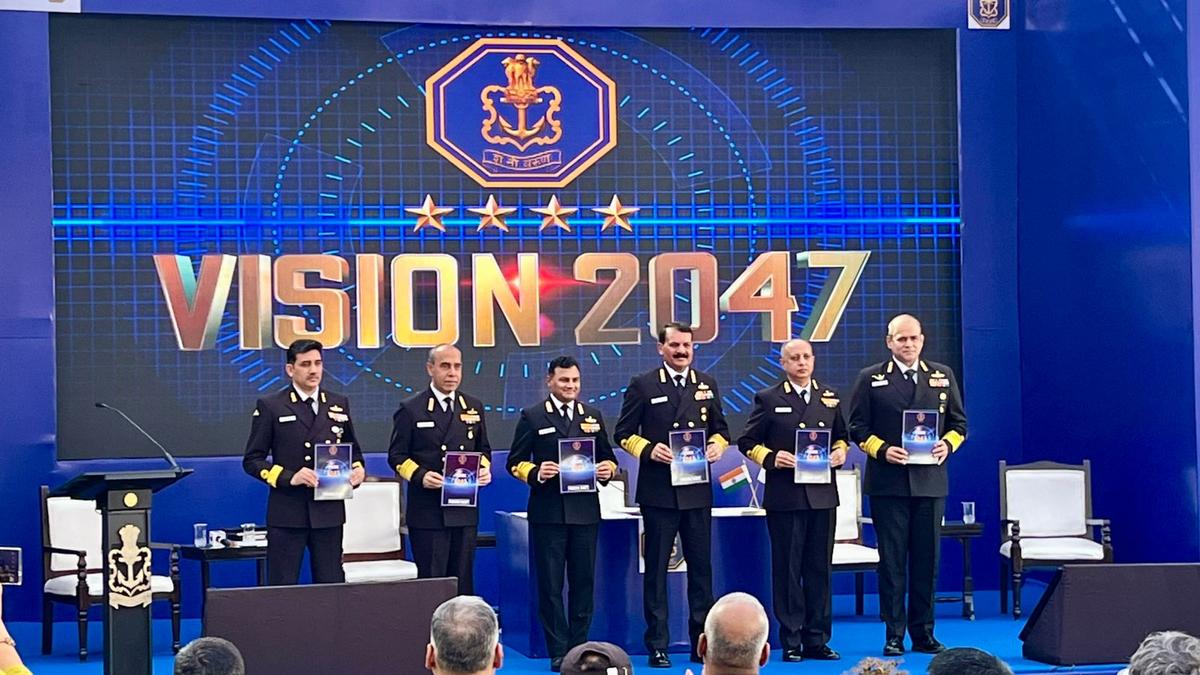
- 03 Dec 2024
In News:
- Deal for 26 Rafale-M jets nearing completion, with final formalities expected to be completed by January 2025.
- These jets are designed for naval operations and will be deployed on INS Vikrant and INS Vikramaditya.
- Rafale-M Features: Multi-role, advanced avionics, AESA radar, and armaments like Meteor, MICA, SCALP, EXOCET.
- Three Scorpene Submarines: Additional three Scorpene-class submarines to be procured from France.
- These are part of a repeat order to Mazagon Dock Shipbuilders Limited (MDL), with five of the earlier six already inducted into service.
Nuclear Capabilities:
- INS Arighaat: Successfully fired a Submarine-Launched Ballistic Missile (SLBM), marking a significant milestone for India's nuclear deterrence.
- Indigenous Nuclear Attack Submarine (SSN): India’s first indigenous SSN expected by 2036-37.
Strategic Maritime Engagement:
- Indian Ocean Region (IOR): Active monitoring of maritime activities, especially of China's PLA Navy and Chinese research vessels.
- Pakistan Navy Expansion: Acknowledged Pakistan’s efforts to become a 50-ship Navy, including the acquisition of 8 Chinese submarines. Indian Navy is adapting its plans to address this.
Nuclear Submarine Program (SSBN):
- INS Arihant: Conducted multiple deterrence patrols.
- INS Arighaat: Ongoing trials including the recent K4 SLBM test, with a range of 3,500 km.
Naval Vision 2047:
- Navy Chief released Vision 2047 document, outlining the future direction and growth of the Indian Navy.
Bilateral and Multilateral Engagements:
- Participation in various bilateral and multilateral exercises, including RIMPAC 2024 (Hawaii) and Russian Federation Navy’s Raising Day (St. Petersburg).
Eklavya Digital Platform
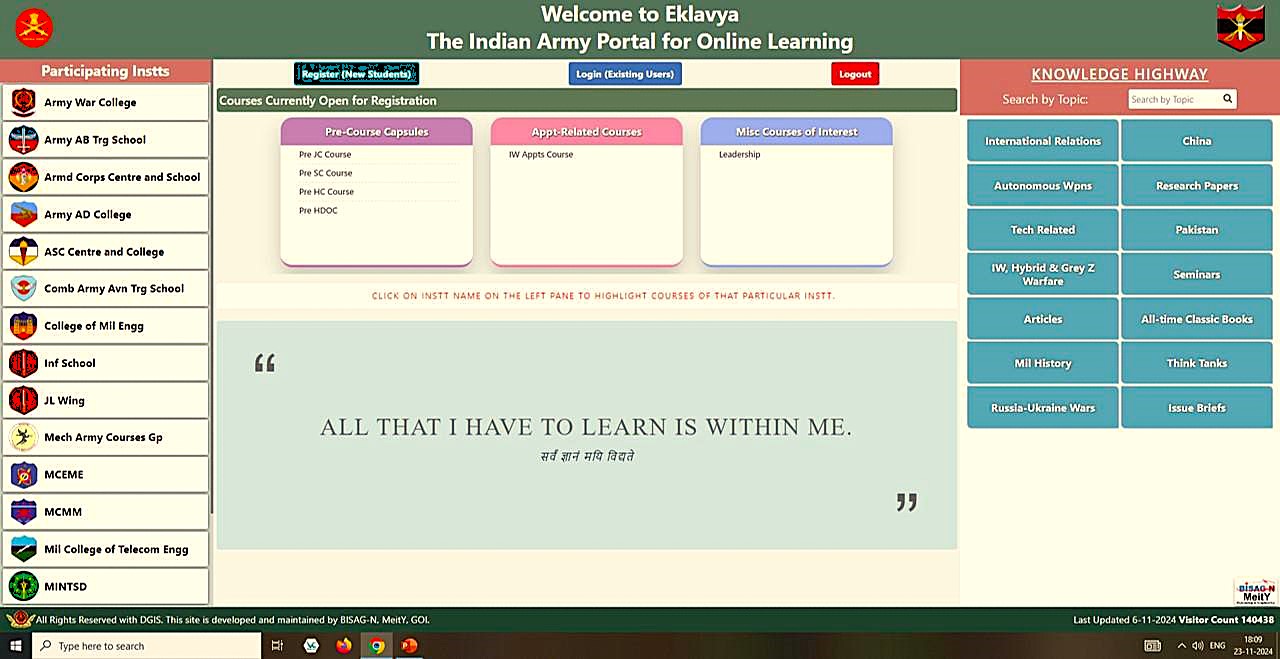
- 29 Nov 2024
In News:
- The Indian Army launched the “Eklavya” online learning platformnmunder the leadership of General Upendra Dwivedi, Chief of the Army Staff (COAS).
- It is part of the Army’s “Decade of Transformation” initiative and aligns with the theme for 2024, “Year of Technology Absorption.”
Platform Development:
- Developed by the Army Training Command (ATC) and sponsored by the Army War College.
- Created at zero cost in collaboration with the Bhaskaracharya National Institute of Space Applications and Geoinformatics (BISAG-N), Gandhinagar.
- Hosted on the Army Data Network with scalable architecture to integrate various training establishments.
Key Features:
- Supports multiple courses from 17Category ‘A’ Training Establishments of the Army.
- Allows student officers to register for several courses simultaneously.
- Aims to decongest physical courses and integrate contemporary, application-focused content.
Categories of Courses:
- Pre-Course Preparatory Capsules: Online study material for physical courses, allowing focus on contemporary topics during offline training.
- Appointment-Specific Courses: Online courses for officers appointed to specialized roles (e.g., information warfare, financial planning, etc.), helping them gain domain-specific expertise before posting.
- Professional Development Suite: Includes courses on strategy, leadership, operational art, finance, emerging technologies, etc., focusing on holistic officer development.
Knowledge Highway:
- A searchable database featuring journals, research papers, and articles to support continuous professional education and development.
Impact:
- Promotes continuous professional military education.
- Enhances the efficiency and specialization of officers, particularly in emerging domains.
- Streamlines training processes and integrates modern technology in the Army’s educational system.
11th ASEAN Defence Ministers’ Meeting-Plus (ADMM-Plus)
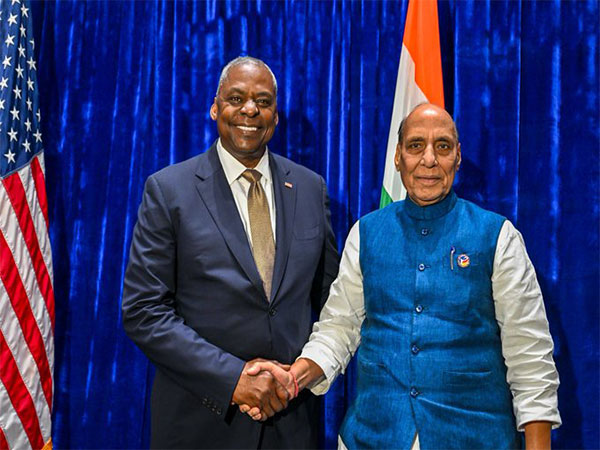
- 23 Nov 2024
In News:
The 11th ADMM-Plus held in Vientiane, Laos saw Union Defence Minister Rajnath Singh engage in discussions with his counterparts from the United States, Japan, and the Philippines.
Focus: The talks centered on strengthening defence partnerships, regional security, and enhancing cooperation among Indo-Pacific nations.
ASEAN Defence Ministers’ Meeting-Plus (ADMM-Plus):
- Platform for Dialogue: The ADMM-Plus is a key platform for ASEAN and its eight Dialogue Partners—Australia, China, India, Japan, New Zealand, Republic of Korea, Russia, and the United States.
- Establishment: The inaugural ADMM-Plus was held in HàN?i, Vietnam on 12 October 2010.
- Annual Meetings: Since 2017, the ADMM-Plus has met annually to enhance dialogue and cooperation amidst an increasingly complex regional security environment.
Objectives:
- Capacity Building: To aid ASEAN members in addressing shared security challenges.
- Promote Trust and Transparency: Enhance mutual trust and confidence between ASEAN and partner nations.
- Regional Peace and Stability: Focus on cooperation in defence and security to counter transnational security challenges.
- ASEAN Security Community: Contribute to realizing the ASEAN Security Community, as per the Bali Concord II, aiming for peace, stability, democracy, and prosperity in the region.
- Vientiane Action Programme: Facilitate ASEAN's efforts towards a peaceful, secure, and prosperous ASEAN with outward-looking relations with Dialogue Partners.
Guided Pinaka Weapon System
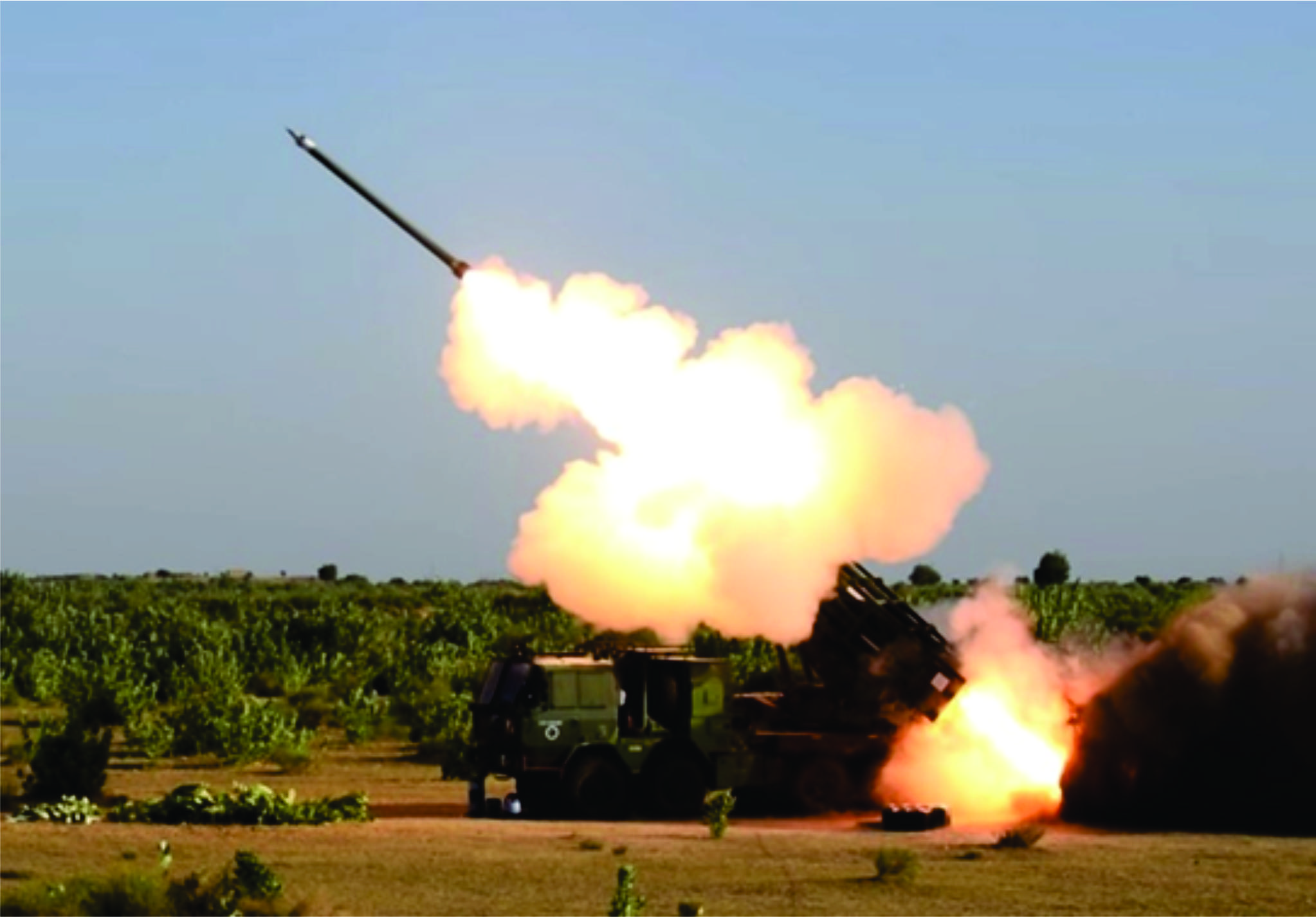
- 22 Nov 2024
In News:
Defence Research and Development Organisation (DRDO) has successfully completed the Flight Tests of Guided Pinaka Weapon System.
Key Details of the Flight Tests:
- Conducted as part of Provisional Staff Qualitative Requirements (PSQR) Validation Trials.
- Tests Phases: Flight tests were carried out in three phases at different field firing ranges.
- Parameters Assessed:
- Ranging (the distance the weapon can accurately target).
- Accuracy (precision of hits).
- Consistency (performance over multiple trials).
- Rate of Fire (ability to fire multiple rockets simultaneously in salvo mode).
Guided Pinaka Weapon System:
- Design and Development:
- Developed by Armament Research and Development Establishment (ARDE) in association with other DRDO labs and production agencies, including:
- Research Centre Imarat,
- Defence Research and Development Laboratory,
- High Energy Materials Research Laboratory,
- Proof & Experimental Establishment.
- Production Agencies: Munitions India Limited, Economic Explosives Limited, Tata Advanced Systems Limited, and Larsen & Toubro.
- Developed by Armament Research and Development Establishment (ARDE) in association with other DRDO labs and production agencies, including:
- Key Features:
- Pinaka: A multi-barrel rocket launcher system named after Lord Shiva’s bow.
- Mobility: Highly mobile, providing quick deployment in battlefield scenarios.
- Firepower: Capable of delivering concentrated firepower on enemy targets.
- Upgraded Version (Pinaka Mark II):
- Extended range: 70 to 80 km.
- Future range targets: 120 km and 300 km.
- Salvo Mode: Tested for the ability to launch 12 rockets simultaneously.
- Significance:
- Strategic Importance: The successful trials enhance the artillery firepower of the Indian Armed Forces.
- Completion of Pre-requisite Trials: The system has successfully completed all flight trials before its induction into the Indian Army.
Army Tactical Missile System (ATACMS)
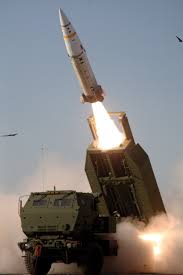
- 20 Nov 2024
In News:
- Russia reported that Ukraine fired six US-made Army Tactical Missile System (ATACMS) missiles at Bryansk, Russia, marking a significant escalation in the ongoing conflict.
- This came after US President Joe Biden authorized Ukraine to use long-range missiles to strike deeper inside Russian territory, easing previous restrictions on such weapons
About the Army Tactical Missile System (ATACMS)
- Overview:
- ATACMS is a surface-to-surface artillery weapon system designed to strike targets at much greater ranges than conventional artillery, rockets, or missiles.
- Manufacturer: Produced by Lockheed Martin, a leading US defense contractor.
- First Use: It was first used during the 1991 Persian Gulf War.
- Key Features:
- Guidance: ATACMS missiles are inertially guided ballistic missiles, capable of operating in all weather conditions.
- Range: Approximately 190 miles (305 km).
- Propulsion: It uses a single-stage, solid propellant for propulsion.
- Launch Platforms: Fired from platforms like the High Mobility Artillery Rocket System (HIMARS) and the M270 Multiple Launch Rocket System (MLRS).
- Payload: ATACMS missiles can carry cluster munitions, releasing hundreds of smaller bomblets over a targeted area, increasing their destructive power.
- Global Operators:Besides the US, ATACMS is also operated by countries such as Bahrain, Greece, South Korea, Taiwan, and the United Arab Emirates.
India Successfully Tests Long-Range Hypersonic Missile
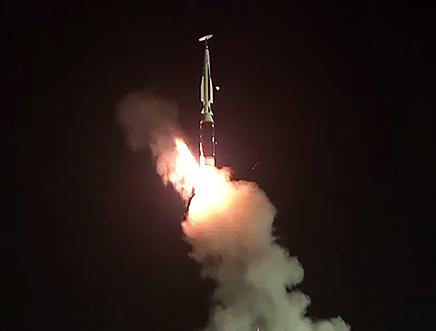
- 18 Nov 2024
In News:
- India has made a major advancement in its defense capabilities with the successful flight test of its first long-range hypersonic missile, marking a historic moment in the country's defense technology.
- The test was conducted, by the Defence Research and Development Organisation (DRDO), took place off the coast of Odisha from the Dr. A.P.J. Abdul Kalam Island.
- The missile has a range of over 1,500 km and is capable of carrying various payloads for all branches of the armed forces.
Key Highlights of the Test:
- Successful Trial: The missile successfully completed its flight test with high accuracy, confirmed by the data gathered from down-range ship stations. It performed a series of terminal maneuvers, validating its precision targeting capabilities.
- Speed and Range: The missile achieved hypersonic speeds (Mach 6), or six times the speed of sound, and is designed for a range of more than 1,500 km, far exceeding the capabilities of many conventional missiles.
- Indigenous Development: This missile is a product of DRDO's indigenous efforts, developed with contributions from the Dr. APJ Abdul Kalam Missile Complex in Hyderabad, as well as other DRDO laboratories and industry partners.
What are Hypersonic Missiles?
- Definition: Hypersonic missiles are defined as weapons that travel at speeds greater than Mach 5 (five times the speed of sound), or about 3,836 miles per hour (6,174 km/h). At such speeds, they are incredibly difficult to track and intercept, posing a challenge for traditional missile defense systems.
- Types:
- Hypersonic Glide Vehicles (HGVs): These are launched from rockets and glide towards their target.
- Hypersonic Cruise Missiles (HCMs): These missiles use air-breathing engines like scramjets for sustained flight at hypersonic speeds.
- Advantages: Hypersonic missiles offer several advantages, including:
- Responsive strike capability: They can target time-sensitive threats quickly and with high precision.
- Manoeuvrability: Unlike ballistic missiles, which follow a predictable parabolic trajectory, hypersonic missiles can change course mid-flight, making them harder to defend against.
- Challenges:
- Heat and air resistance: Traveling at such high speeds generates tremendous heat due to friction, presenting engineering challenges.
- Tracking and interception: Their low-altitude flight and high speeds make them harder to detect and intercept with existing missile defense systems.
- High costs: Developing and deploying hypersonic weapons comes at a higher cost than traditional missile systems.
Global Context of Hypersonic Weaponry
- Russia and China: Both Russia and China are leaders in hypersonic missile technology. Russia has already deployed the Kinzhal hypersonic missile in Ukraine, demonstrating its effectiveness in combat situations.
- United States: The U.S. is also making significant advancements, with contracts like the Long Range Hypersonic Weapon (LRHW), awarded to Lockheed Martin for continued development.
- Other Nations: Countries such as France, Germany, Australia, Japan, and Israel are also actively working on developing hypersonic missile systems.
e-Tarang System
- 18 Nov 2024
In News:
Recently, the Ministry of Defence launched the AI-enabled e-Tarang System.
Key Highlights:
- Development Collaboration: Created in partnership with Bhaskaracharya National Institute for Space Applications and Geo-informatics (BISAG-N).
- Purpose:
- Improve planning for interference-free operation of defence equipment during both wartime and peacetime.
- Enable automated, efficient planning and management of Defence Spectrum.
- Support the development of newer technologies in higher frequency bands.
- Facilitate rapid decision-making and integration of critical modern defence technologies.
BISAG-N Overview:
- Status: Autonomous Scientific Society under the Ministry of Electronics & Information Technology (MeitY), Government of India.
- Key Roles:
- Technology development and management.
- Research and development in geo-spatial technologies.
- National and international cooperation in geo-spatial fields.
- Capacity building and entrepreneurship development in geo-spatial technology.
- Core Domains:
- Satellite Communication
- Geo-informatics
- Geo-spatial Technology
Joint Electromagnetic Board (JEMB) – Annual Meeting Highlights:
- Chairperson: Air Marshal Jeetendra Mishra, Deputy Chief of Integrated Defence Staff (Operations).
- Attendees: Senior officers from the Indian Army, Navy, Air Force, DRDO, DDP, and industry.
- Agenda: Focused on joint operations and integration in several areas:
- Electronic Warfare (EW)
- Signature Management
- Emerging Technologies
- Electromagnetic Interference/Compatibility (EMI/EMC)
- Spectrum Management
- Human Resource Management
- Key Outcome:
- Introduction of the AI-enabled e-Tarang System to enhance Defence Spectrum management.
- Release of the Technical News Letter (TNL) 2024, outlining future technologies for modern warfare.
- Development of a roadmap to enhance Spectrum Warfare capabilities and integration of EW assets across the three Services.
- Successful joint EW exercise conducted in September 2024, promoting the principle of “Victory through Jointness”.
Objective of the Meeting:
- Goal: Achieve synergy in joint electronic warfare operations across the Services.
- Focus: Establish technology development and training priorities for the future.
Exercise PoorviPrahar
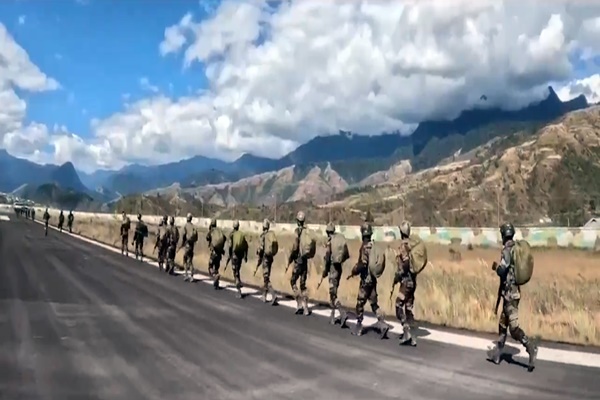
- 17 Nov 2024
In News:
- From November 10 to 18, 2024, the Indian Army is conducting a high-intensity tri-services exercise named PoorviPrahar in the forward areas of Arunachal Pradesh.
- The exercise aims to enhance the combat effectiveness and coordination between the Indian Army, Navy, and Air Force, focusing on integrated joint operations in the challenging mountainous terrain of the region.
About Exercise PoorviPrahar
Objective: The primary goal of Exercise PoorviPrahar is to hone the combat readiness and synergy across the three branches of the Indian Armed Forces. It is designed to improve their ability to conduct integrated joint operations, especially in the difficult terrain of Arunachal Pradesh, which is crucial due to the region's strategic location along India's eastern frontier.
Key Features of the Exercise:
- Multidomain Integration:The exercise involves land, air, and sea operations, demonstrating India's capability to conduct multi-domain operations. This showcases the Indian Armed Forces' preparedness to tackle threats across all three domains simultaneously.
- Advanced Military Platforms:
- Aircraft: Advanced fighter jets, reconnaissance aircraft.
- Helicopters: Including Chinook heavy-lift helicopters and Advanced Light Helicopters (ALH Rudra).
- Artillery: The exercise makes use of the M777 Ultra-Light Howitzers, which provide mobility and precision firepower in rugged terrains.
- Swarm Drones and Loitering Munitions: These cutting-edge technologies enable precision strikes and enhanced situational awareness, contributing to more flexible and adaptive operations.
- Technological Integration:
- The exercise integrates next-generation technologies like Swarm Drones, Loitering Munitions, and First-Person View (FPV) Drones. These tools enhance operational flexibility, improve situational awareness, and enable precision in strike capabilities, marking a significant advancement in India's military technology.
- Operational Coordination:A core component of the exercise is the development of a Common Operating Picture (COP). This system integrates real-time data from land, air, and sea operations, improving coordination and decision-making. The system relies on AI-driven analytics and satellite communications, enabling rapid information sharing and quicker response times.
- Tactical Focus on Mountain Warfare:Arunachal Pradesh, with its mountainous and rugged terrain, is the perfect setting for honing skills required for mountain warfare. The region’s proximity to India’s border with China makes it a critical area for India’s defense strategy.
Key Takeaways:
- Integrated Joint Operations: The exercise focuses on improving the coordination between the Army, Navy, and Air Force to execute seamless operations across land, air, and sea.
- Advanced Technology Integration: The exercise features the use of Swarm Drones, Loitering Munitions, and AI-driven systems to enhance precision, situational awareness, and overall operational flexibility.
- Mountain Warfare Expertise: Conducted in the mountainous terrain of Arunachal Pradesh, the exercise is crucial for preparing the Indian Armed Forces to operate effectively in such challenging landscapes.
- Strategic Posture: The exercise reaffirms India’s ability to defend its Eastern frontier and maintain a robust defense posture in the face of potential threats in the region.
India’s Vision of ‘Adaptive Defence’
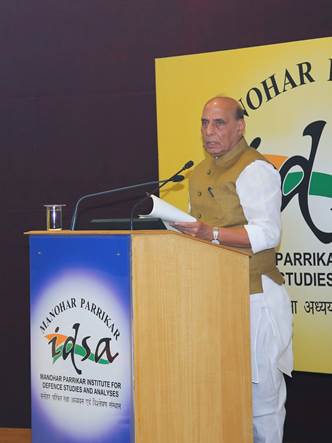
- 13 Nov 2024
In News:
- Defence Minister Shri Rajnath Singh introduced the concept of ‘Adaptive Defence’ at the inaugural Delhi Defence Dialogue (DDD).
- Adaptive Defence aims to prepare India's military for the rapidly changing landscape of modern warfare, with evolving threats and technologies shaping global security.
Key Aspects of Adaptive Defence:
- Strategic Approach:
- Adaptive Defence is an evolving strategy where military and defence systems continuously adjust to emerging threats, focusing on proactive preparedness rather than reactive responses.
- It is based on anticipating future threats, fostering flexibility, resilience, and agility in both strategic and tactical responses.
- Core Elements:
- Situational Awareness: The ability to understand and respond to dynamic, often unpredictable environments.
- Flexibility & Agility: At both the strategic and tactical levels to ensure swift and effective responses.
- Resilience: The capacity to recover and adapt quickly to unforeseen circumstances.
- Integration with Emerging Technologies: Emphasis on adopting cutting-edge technologies like AI, drones, and cybersecurity to stay ahead of adversaries.
The Changing Nature of Warfare:
- Grey Zone & Hybrid Warfare:
- Modern conflicts now often occur in the grey zone and involve hybrid warfare, blending traditional and non-traditional threats like cyber-attacks, terrorism, and psychological warfare.
- These new threats demand continuous adaptation in strategies, doctrines, and military operations.
- Technological Transformation:
- Drones and swarm technologies are reshaping warfare. India aspires to become a global hub for drones, leveraging these technologies for both economic and military growth.
- The increasing significance of Artificial Intelligence (AI), cyber capabilities, and quantum technologies in defence highlights the need for international collaboration in research and innovation.
- Psychological Warfare:
- The rise of information overload and psychological warfare challenges traditional defence paradigms. Manipulation of information to influence public opinion and disrupt decision-making processes is now a key threat.
Government Initiatives for Adaptive Defence:
- Institutional Strengthening:
- Establishment of the Chief of Defence Staff (CDS) and initiatives to enhance jointness among the three armed services (Army, Navy, Air Force) to create a unified strategic force.
- Reform of training curricula and emphasis on integrated operations to ensure readiness for new-age warfare.
- Focus on Self-Reliance:
- Strengthening the indigenous defence sector through initiatives like Make in India and the Aatmanirbhar Bharat campaign.
- Increasing foreign direct investment (FDI) in defence and promoting defence exports, with India currently exporting to over 100 nations.
- Drone Hub Vision:
- India aims to become the world’s drone hub, supporting R&D and fostering innovation to develop reliable certification mechanisms and enhance Indian intellectual property in the drone sector.
- Programs like iDEX (Innovations for Defence Excellence) and ADITI are rewarding innovation and driving India's defence sector towards greater self-sufficiency.
- Technology and Innovation:
- Focus on cybersecurity, AI, and quantum technologies to develop solutions that address both national and global security challenges.
- India is also working on Theaterisation, integrating the three services into a unified force structure for enhanced coordination and joint operations.
- Defence Acquisition and Export:
- Introduction of the Defence Acquisition Procedure 2020, establishment of Defence Industrial Corridors in Uttar Pradesh and Tamil Nadu, and a Positive Indigenisation List to boost self-reliance.
- India is actively increasing defence exports, aiming for Rs 50,000 crore worth of exports by 2029, with key export destinations including the USA, France, and Armenia.
Strategic Vision for the Future:
- Collaborative Approach:
- Given the interconnectedness of global security, the defence minister emphasized the importance of a collaborative approach in dealing with transnational threats.
- Cross-border issues, cyberspace threats, and the potential of quantum and nanotechnologies demand the sharing of knowledge and strategies across borders.
- Joint Military Vision:
- Jointness in defence strategy should go beyond national borders and should involve international cooperation in response to global security challenges.
- The need for interconnected solutions in the face of transnational threats underscores the importance of multilateral cooperation.
Indian Military Heritage Festival 2024
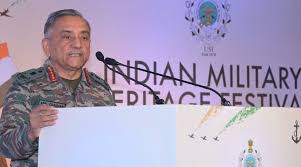
- 10 Nov 2024
In News:
- Chief of Defence Staff General Anil Chauhan inaugurated the 2nd edition of the Indian Military Heritage Festival (IMHF) on November 8, 2024, in New Delhi.
- The two-day festival engages global and Indian experts, corporations, academicians, and non-profits focusing on India’s national security, foreign policy, military history, and military heritage.
Launch of Project Shaurya Gatha:
- Project ‘Shaurya Gatha’ was launched to conserve and promote India’s military heritage.
- The initiative, spearheaded by the Department of Military Affairs and USI of India, focuses on education and tourism to highlight India’s military history and valor.
- Publications Released:
- General Chauhan released important military publications:
- "Because of this: A History of the Indo-Pak Air War December 1971" by Air Marshal Vikram Singh (Retd).
- "Valour and Honour", a joint publication by the Indian Army and USI of India.
- "War-wounded, Disabled Soldiers, and Cadets", a joint publication by USI and the War Wounded Federation.
- General Chauhan released important military publications:
- Festival's Significance:
- The festival addresses the gap in public awareness regarding India’s military heritage and security concerns.
- It aims to enhance understanding of India’s military traditions, security issues, and the country’s efforts toward self-reliance in military capabilities under the Aatmanirbhar Bharat initiative.
India-Algeria Strengthen Defence Ties
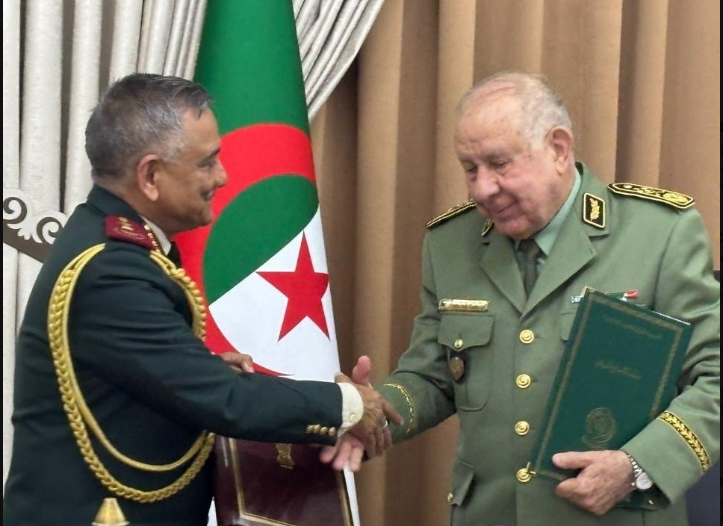
- 06 Nov 2024
In News:
- The Chief of Defence Staff (CDS) of India recently visited Algeria, culminating in the signing of a significant Memorandum of Understanding (MoU) on defence cooperation.
- Objective: The MoU aims to strengthen the strategic and military ties between India and Algeria.
Recent Developments in India-Algeria Relations
- Important Visit: The CDS’s visit coincided with Algeria’s 70th anniversary of its revolution, celebrated on November 1st, with military parades and ceremonies highlighting Algeria’s historical and political legacy.
- Defence Cooperation:
- India re-established its defence wing in Algeria, and Algeria reciprocated by considering the establishment of its defence wing in India.
- India emphasized its role as a “Vishwa Bandhu” (global partner) and offered to share defence expertise and experiences with Algeria.
- Strategic Discussion: The MoU aims to enhance mutual understanding, laying the foundation for long-term defence collaboration across multiple sectors, including manufacturing under India’s 'Make in India' and 'Make for the World' initiatives.
- Global Peace Support: CDS reiterated India’s commitment to peaceful conflict resolution and expressed support for Algeria’s defence interests.
Significant Areas of India-Algeria Relationship
- Diplomatic Relations:
- India and Algeria established diplomatic ties in July 1962, the same year Algeria gained independence from French colonial rule.
- India supported Algeria's liberation movement and both countries have maintained close ties as part of the Non-Aligned Movement.
- Bilateral Trade:
- Trade peaked at USD 2.9 billion in 2018 but dropped to USD 1.5 billion by 2021 due to COVID-19 and Algeria’s import restrictions.
- Trade rebounded in 2022, increasing by 24% to USD 2.1 billion.
- Exports from India (2023-24): Rice, pharmaceuticals, granite.
- Imports from Algeria: Petroleum oils, LNG, calcium phosphates.
- Bilateral Agreements:
- 2015 MoU: Between All India Radio (AIR) and Algerian National Radio for cooperation in broadcasting.
- 2018 Space Cooperation Agreement: Focuses on satellite technology for applications like crop forecasting and disaster management.
- Visa Waiver Agreement (2021): Diplomatic and official passport holders are exempt from visa requirements.
- Cultural Engagement:
- International Day of Yoga (2024): Celebrated in Algeria at the Jardin d’Essai du Hamma, attracting over 300 participants.
- Space Cooperation:
- The 2018 India-Algeria Space Cooperation Agreement focuses on joint space science, technology, and applications.
- India has launched four Algerian satellites (2016), and the 2022 Joint Committee Meeting expanded satellite capacity building efforts.
- Algeria’s space agency has engaged with ISRO on satellite applications like crop forecasting and disaster management.
- Indian Community in Algeria:
- Approximately 3,800 Indians live in Algeria, working in various sectors, including technical and semi-skilled roles.
- The community includes 13 Overseas Citizens of India (OCI), 10 Persons of Indian Origin (PIOs), and 15 Indian students.
VINBAX 2024 Exercise
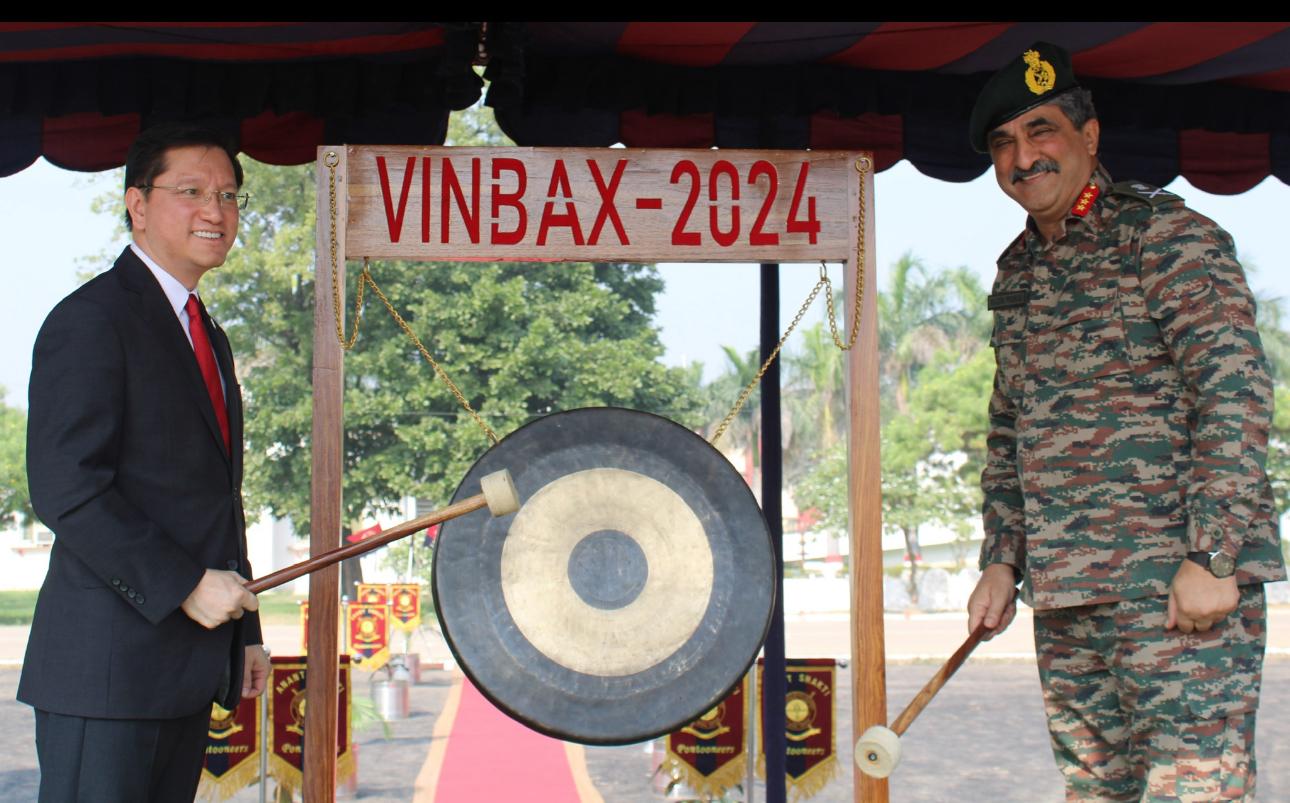
- 06 Nov 2024
In News:
The 5th Edition of Vietnam Indian Bilateral Army Exercise “VINBAX 2024” had commenced at Ambala.
Key Participants
- Indian Army: A contingent of 47 personnel from the Corps of Engineers, along with personnel from other arms and services.
- Vietnam People's Army: A similar-sized contingent representing Vietnam's military forces.
- Bi-Service Participation: For the first time, personnel from both Army and Air Force of India and Vietnam are participating.
Objectives of VINBAX 2024
- Joint Military Capability Enhancement:
- Focus on enhancing joint military capabilities of both countries, specifically in the deployment of Engineer Companies and Medical Teams.
- Peacekeeping Operations (UN Context):
- The exercise prepares both sides for United Nations Peacekeeping Operations (PKO), under Chapter VII of the UN Charter, which deals with peace enforcement actions.
- Humanitarian Assistance & Disaster Relief (HADR):
- The exercise includes a 48-hour validation exercise with demonstrations of Humanitarian Assistance and Disaster Relief (HADR) operations.
- The HADR component will include equipment displays to assess the technical standards of both contingents while executing disaster relief and humanitarian missions in peacekeeping contexts.
Key Activities & Events
- Field Training Exercise: The exercise includes a field training component, with a larger scope than previous editions, focusing on:
- Engineer Tasks.
- Medical Support.
- Disaster Relief Operations.
- Validation Exercise: A critical 48-hour validation exercise to test the preparedness of the two forces in providing HADR, including:
- Demonstrations of disaster relief operations.
- Equipment displays to showcase capabilities in managing and executing peacekeeping and humanitarian operations.
- Cultural Exchange: The exercise will also provide an opportunity for cultural exchange, where the troops will learn about the social and cultural heritage of each other.
Background of VINBAX
- Inception: VINBAX was first conducted in 2018 as part of the growing defense cooperation between India and Vietnam. The inaugural edition took place in Jabalpur, Madhya Pradesh.
- Alternating Locations: The exercise alternates between India and Vietnam every year.
- Previous Editions:
- 2023 Edition: Held in Vietnam.
- Current Edition: This is the 5th edition, conducted in India (Ambala and Chandimandir).
Indian Defense Engagements in Southeast Asia
- India-Indonesia Joint Special Forces Exercise (Garud Shakti 2024): Held from November 1-12, 2024, in Cijantung, Jakarta, strengthening ties with Indonesian special forces.
- Singapore-India Maritime Bilateral Exercise (SIMBEX 2024): Held from October 23-29, 2024, in Visakhapatnam, focusing on maritime security cooperation in the Indo-Pacific.
Bob Khathing
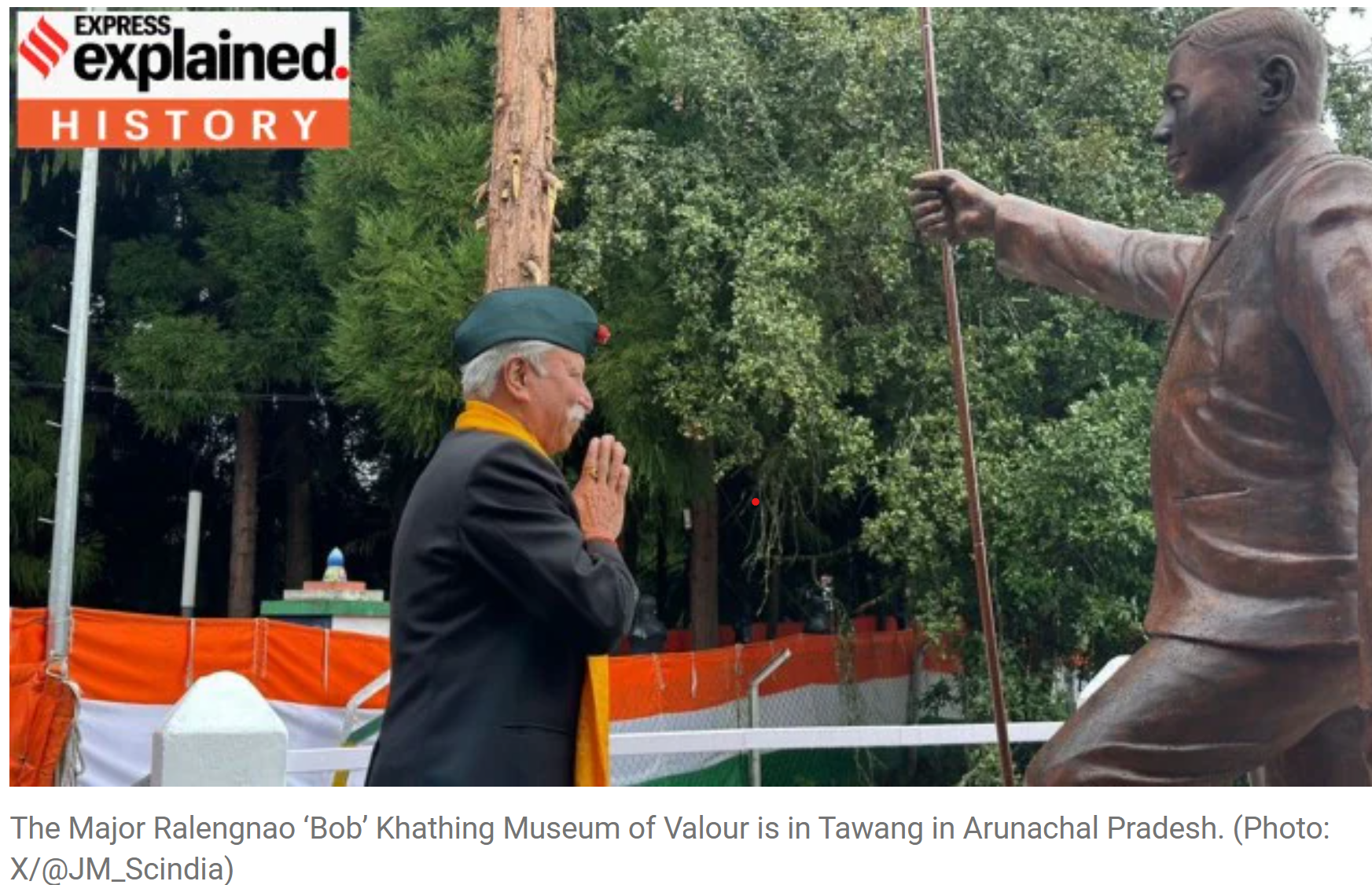
- 05 Nov 2024
In News:
- Defence Minister Rajnath Singh inaugurated the Major Ralengnao 'Bob' Khathing Museum of Valour in Tawang, Arunachal Pradesh, on October 31, 2023, coinciding with National Unity Day (Sardar Vallabhbhai Patel's birth anniversary).
- Significance: The museum honours Bob Khathing's contributions to India's security and the integration of Tawang into India.
Role in the Integration of Tawang:
- Tawang Expedition (1951): In January 1951, Major Bob Khathing, an officer of the Indian Frontier Administrative Service, led the expedition to peacefully integrate Tawang into India.
- Strategic Importance: At the time, there were concerns over Chinese intentions to enter Tibet and realign boundaries. Khathing's mission was crucial to prevent Chinese advances into the area.
- Expedition Details: Khathing set off with Assam Rifles troops from Charduar, Assam, and after overcoming extreme terrain and weather, he reached Tawang. On February 14, 1951, he hoisted the Indian flag, marking Tawang's official integration into India.
- Administrative Setup: Khathing established an administrative framework, including appointing Gaon Buras (village elders) to manage local governance.
Military Service and Recognition:
- World War II Service: Bob Khathing joined the Indian Army in 1939 and earned recognition for his role in the Second World War. He was awarded the Member of the British Empire (MBE) and the Military Cross (MC) for his bravery and leadership.
- Guerrilla Warfare: Khathing was part of the Victor Force, a British-led guerrilla unit tasked with countering the Japanese in Burma and India during WWII. Later, he became the adviser to SANCOL, a force set up to track Japanese forces in the region.
- Military Cross Citation: Khathing was praised for his tireless efforts in organizing local Naga support, gathering intelligence, and participating in successful ambushes, which played a critical role in defeating the Japanese.
Post-War Career and Civil Service:
- Ministerial Role in Manipur: After WWII, Khathing was demobilized and joined the interim government of Manipur, where he served as a minister in charge of the hill areas.
- Integration of Manipur: Following Manipur's merger with India in 1949, Khathing joined the Assam Rifles and served for two years before moving into civil administration.
- Key Positions: He served as Deputy Commissioner of Mokokchung (Nagaland), Development Commissioner in Sikkim, and Chief Secretary of Nagaland.
- Ambassadorship: In 1975, Khathing became India's ambassador to Burma, possibly the first person of tribal origin to hold such a position in independent India.
The Importance of His Contributions:
- Integration of Border Areas: Khathing’s role in integrating Tawang and securing India's northeastern frontier was pivotal in preventing further territorial disputes, especially with China.
- Institutional Development: He helped establish military and security institutions, including the Sashastra Seema Bal, Nagaland Armed Police, and the Naga Regiment, which played important roles in maintaining peace and security in the region.
- Heroic Leadership: Khathing's leadership, both as a soldier and civil servant, continues to be celebrated, symbolized by the Major Bob Khathing Museum of Valour.
C-295 Aircraft

- 29 Oct 2024
In News:
- Recently, PM Narendra Modi inaugurated the Final Assembly Line (FAL) plant in Vadodara, Gujarat, for the manufacturing of the C-295 aircraft.
- The plant is a joint venture between Tata Advanced Systems Ltd (TASL) and Airbus.
- This is the first private sector final assembly line for military aircraft in India.
Key Details:
- Manufacturing Timeline
- Contract: In September 2021, India signed a ?21,935 crore deal with Airbus Defence and Space to procure 56 C-295 aircraft to replace the IAF’s ageing Avro-748 fleet.
- Production Plan:
- The first 16 aircraft will be delivered from Airbus’s plant in Seville, Spain, between September 2023 and August 2025.
- The remaining 40 aircraft will be produced in India by TASL, with the first “Made-in-India” C-295 rolling out in September 2026.
- The entire fleet (56 aircraft) is expected to be delivered by August 2031.
- Key Features and Specifications
- Type: Tactical transport aircraft with a capacity of 5 to 10 tonnes.
- Maximum Speed: 480 km/h.
- Cabin Dimensions: 12.7 meters (41 feet 8 inches), the longest unobstructed cabin in its class.
- Passenger Capacity: Can accommodate up to 71 seats.
- Cargo Handling: Rear ramp door for quick loading/unloading and para-dropping.
- Short Take-off and Landing (STOL): Capable of operating from airstrips as short as 2,200 feet.
- Significance for the Indian Air Force (IAF)
- The C-295 will enhance the medium-lift tactical capability of the IAF.
- It will replace the ageing Soviet-origin AN-32 aircraft, which are nearing the end of their operational life.
- The C-295 will bridge the capability gap in troop and cargo transport over short and medium distances.
- Indigenous Content
- Indigenous Electronic Warfare Suite: All 56 aircraft will be equipped with an indigenous electronic warfare suite, developed by Bharat Electronics Ltd (BEL) and Bharat Dynamics Limited (BDL).
- Made-in-India Components: 96% of the work that Airbus does in Spain will be done at the Vadodara plant, making it one of the highest-ever indigenous contributions for an aircraft in India.
- Global Operations of the C-295
- The C-295 is operational in various challenging terrains worldwide, including:
- Brazilian jungles, Colombian mountains (South America)
- Deserts of Algeria and Jordan (Middle East)
- Cold climates of Poland and Finland (Europe)
- Military operations in Chad, Iraq, and Afghanistan.
- The C-295 is operational in various challenging terrains worldwide, including:
- Roles and Capabilities
- Tactical Transport: Can transport troops and supplies from main airfields to forward operating airfields.
- Short Take-off and Landing (STOL): Capable of operating from short, unprepared airstrips.
- Low-level Operations: Can conduct low-speed, low-level missions at 110 knots.
- Other Missions: Suitable for casualty evacuation, special missions, disaster relief, and maritime patrol.
Launch of 'Abhay'
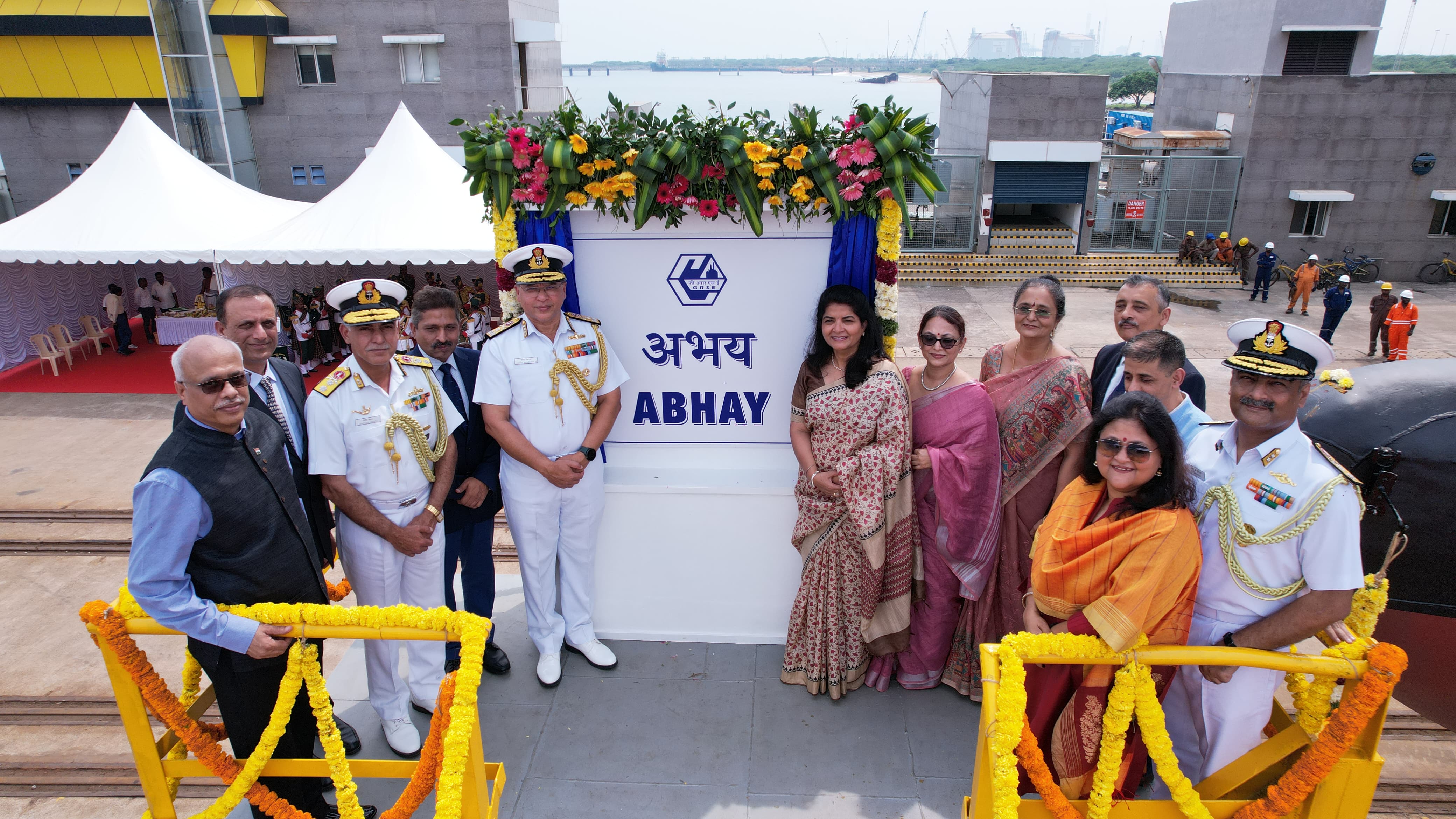
- 27 Oct 2024
In News:
Recently, ‘Abhay’, the seventh ship in the Anti-Submarine Warfare Shallow Water Craft (ASW SWC) series was launched.
Key Details:
Project Background
- Contract Details: The Ministry of Defence (MoD) signed a contract with Garden Reach Shipbuilders & Engineers (GRSE), Kolkata, in April 2019 for the construction of eight ASW SWC ships.
- Class of Ships: The Arnala-class ships are intended to replace the older Abhay-class ASW Corvettes currently in service with the Indian Navy.
- Purpose: These ships are designed for anti-submarine warfare (ASW) operations in coastal waters and to conduct Low-Intensity Maritime Operations (LIMO) and mine-laying activities.
Design and Features of 'Abhay'
- Dimensions:
- Length: 77 meters
- Width: 10 meters
- Speed and Endurance:
- Maximum speed: 25 knots
- Endurance: 1800 nautical miles (NM).
- Propulsion: Waterjet-propelled, offering agility and swift response in tactical situations.
- Indigenous Content: Over 80% indigenous content, supporting India’s Aatmanirbhar Bharat (self-reliant India) initiative in defence manufacturing.
Capabilities of the ASW SWC
- Anti-Submarine Warfare:
- Designed to conduct subsurface surveillance and anti-submarine operations in coastal waters.
- Equipped with advanced sonar systems, including Hull-Mounted Sonar and Low-Frequency Variable Depth Sonar for enhanced underwater surveillance.
- Armament and Equipment:
- Torpedoes and ASW rockets for anti-submarine operations.
- Mines for mine-laying operations.
- Close-in Weapon System (CIWS): 30 mm for close-range defence against aerial and surface threats.
- 12.7 mm Stabilized Remote-Control Guns for additional defensive capability.
Strategic Importance
- Coastal Defence: The ASW SWC ships enhance the Navy’s capability to defend India’s extensive coastline and exclusive economic zone (EEZ) against submarine threats.
- Operational Role:
- In addition to anti-submarine warfare, these ships can conduct Low-Intensity Maritime Operations (LIMO), which include operations against non-traditional threats.
- Mine-laying capability to disrupt enemy naval operations.
- Advanced Detection: These ships are equipped to track both surface and underwater targets, enabling them to coordinate operations with aircraft, strengthening maritime security.
Chanakya Defence Dialogue 2024
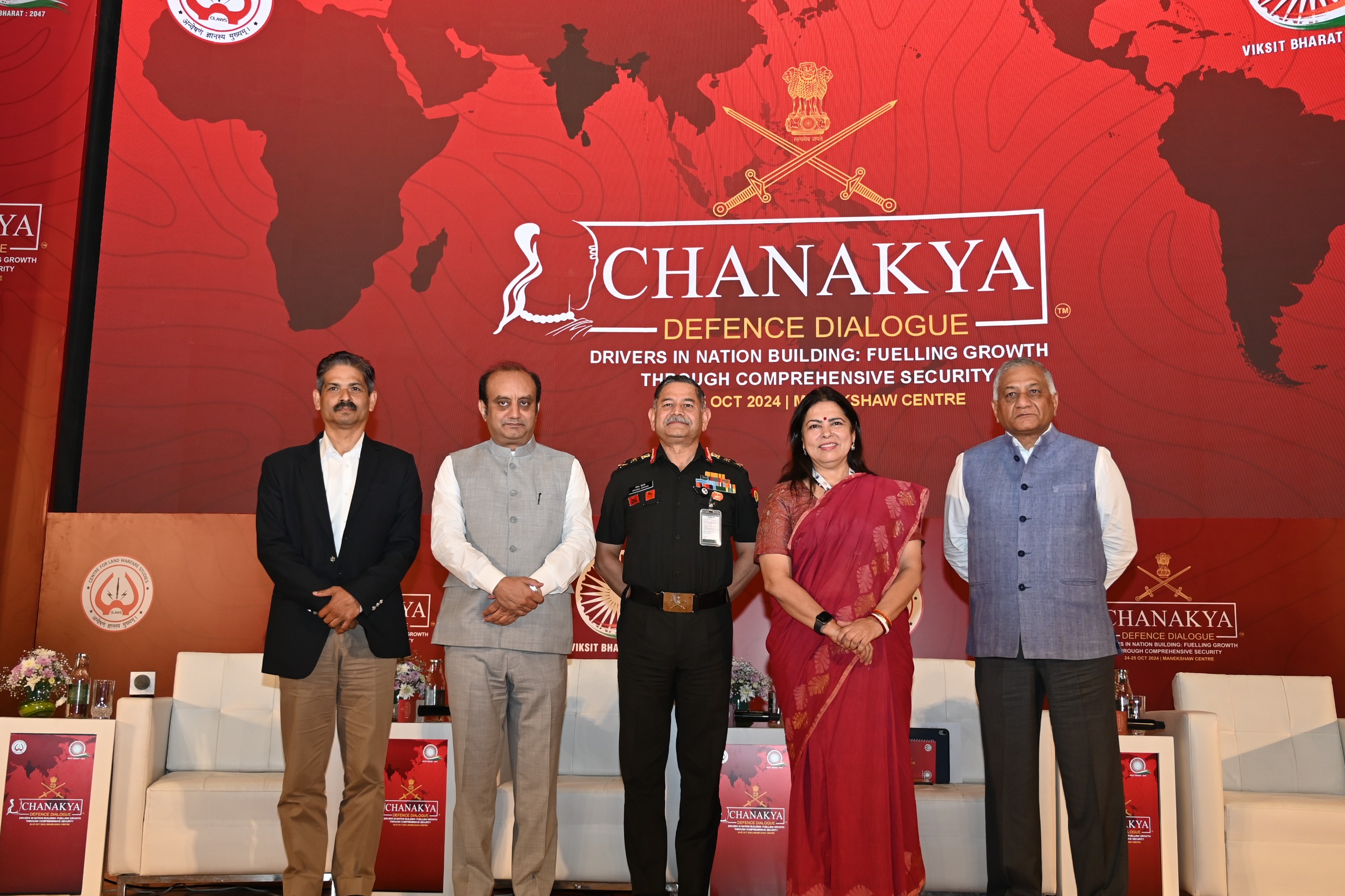
- 26 Oct 2024
In News:
- Recently, the Chanakya Defence Dialogue (CDD) 2024, second edition, was held at the Manekshaw Centre, New Delhi.
- Theme: "Drivers in Nation Building: Fueling Growth Through Comprehensive Security."
- Focus: Discussions on integrating national security into India's development trajectory and global strategy for a Viksit Bharat by 2047.
Key Objectives:
- The dialogue aimed to explore India’s strategic directions and development priorities by fostering discussions between policymakers, strategic thinkers, defence experts, and academia.
- Highlighted the link between national security and economic growth, stressing how security frameworks are vital for national progress.
Key Sessions and Discussions:
- Session 1: Social Cohesion and Inclusive Growth: Pillars of a Secure Nation:
- Focused on internal security, social unity, and inclusive development.
- Panelists discussed the role of community engagement, countering terrorism, and law enforcement reforms.
- Emphasized the need for integrating social progress and addressing challenges like separatism and terrorist narratives.
- Panelists called for evidence-based policies for equitable growth and stronger security frameworks to protect the country from internal threats.
- Session 2: Blurring Frontiers: The Convergence of Technology & Security:
- Addressed the intersection of technology and national security.
- Topics included AI, quantum computing, IoT, and blockchain for improving cyber resilience and data protection.
- Panelists emphasized the need to balance technological innovation with strong security measures, particularly in cybersecurity and critical infrastructure protection.
- Session 3: Ground-breakers: Shaping Land Warfare, Reflections for the Indian Army:
- Explored the integration of emerging technologies like AI, unmanned systems, and cyber warfare tools in enhancing military readiness.
- Focused on indigenous defense technologies under the Atmanirbhar Bharat initiative, promoting self-reliance and reducing dependency on foreign technologies.
- Emphasized multi-domain operations and the challenges of adapting to evolving security threats, especially from advanced cyber and space warfare.
Strategic Insights:
- Economic Growth & Security: The dialogue highlighted that national security and economic growth are interlinked, with a strong military infrastructure crucial for sustaining development.
- Role of Technology: Technological advancements like AI, space technology, and cybersecurity are pivotal for enhancing India's defense capabilities and strategic posture in a rapidly evolving global security landscape.
- Inclusive Security: Emphasized social cohesion and inclusive growth as key components of national security, acknowledging that a unified society contributes significantly to national resilience.
- Global Diplomacy: India’s global leadership in multilateral forums, its stance on peacekeeping, and its role in promoting sustainable development were discussed as part of the country’s soft power strategy.
THAAD Missile Defence System
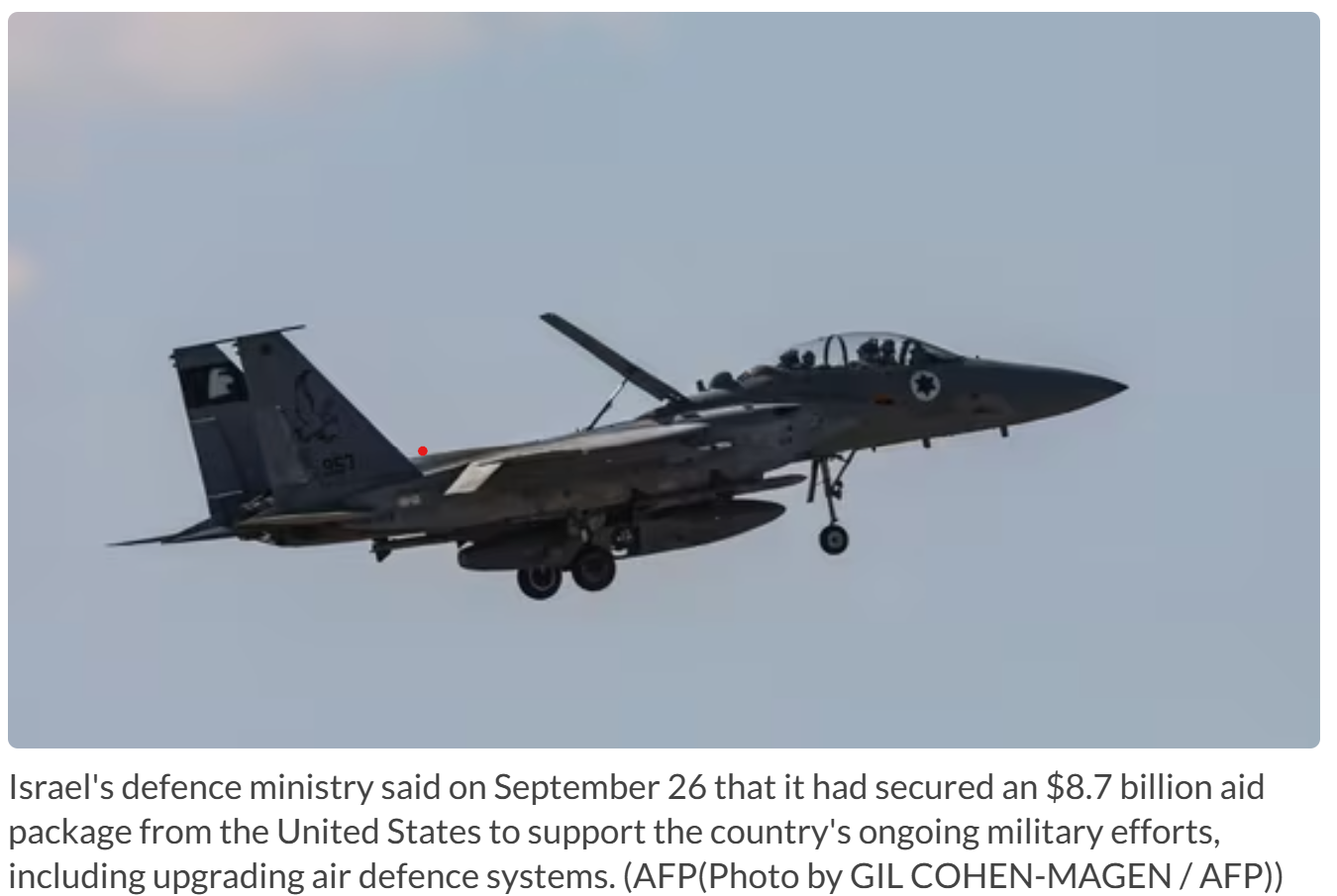
- 14 Oct 2024
In News:
The US pledged its THAAD missile defence system as well as several troops to Israel after Iran warned the country to not get involved.
In a new boost to Israeli forces, the United States will send a Terminal High Altitude Area Defence battery (THAAD) and troops to Israel amid its ongoing offensive against the Hezbollah.
THAAD battery:
- The Terminal High Altitude Area Defence system (THAAD) is an American anti-ballistic missile defence system. It can shoot down short, medium and intermediate range missiles in it's sphere.
- The THAAD has a “hit to kill” approach which blasts missiles as they before they enter their target zone during their descent.
- The THAAD was developed by the US after their experience of Iraq's Scud missile attacks during the Persian Gulf War in 1991. Out of a total of 88 Scud missiles, Iraq fired 42 into Israel and 46 into Saudi Arabia, killing many American soldiers in barracks as well.
- The first proposal for the THAAD was submitted to the US Defence Ministry in 1987 and a series of tests resulting in failures, finally led to a successful version in 1999.
- In 2008, the US deployed an early missile warning radar, a part of the THAAD system to Israel. Similar deployments were also made in 2012 and 2019, aiding Israel's ability to emerge as a military power in the Middle East.
Very Short Range Air Defence System (VSHORAD)
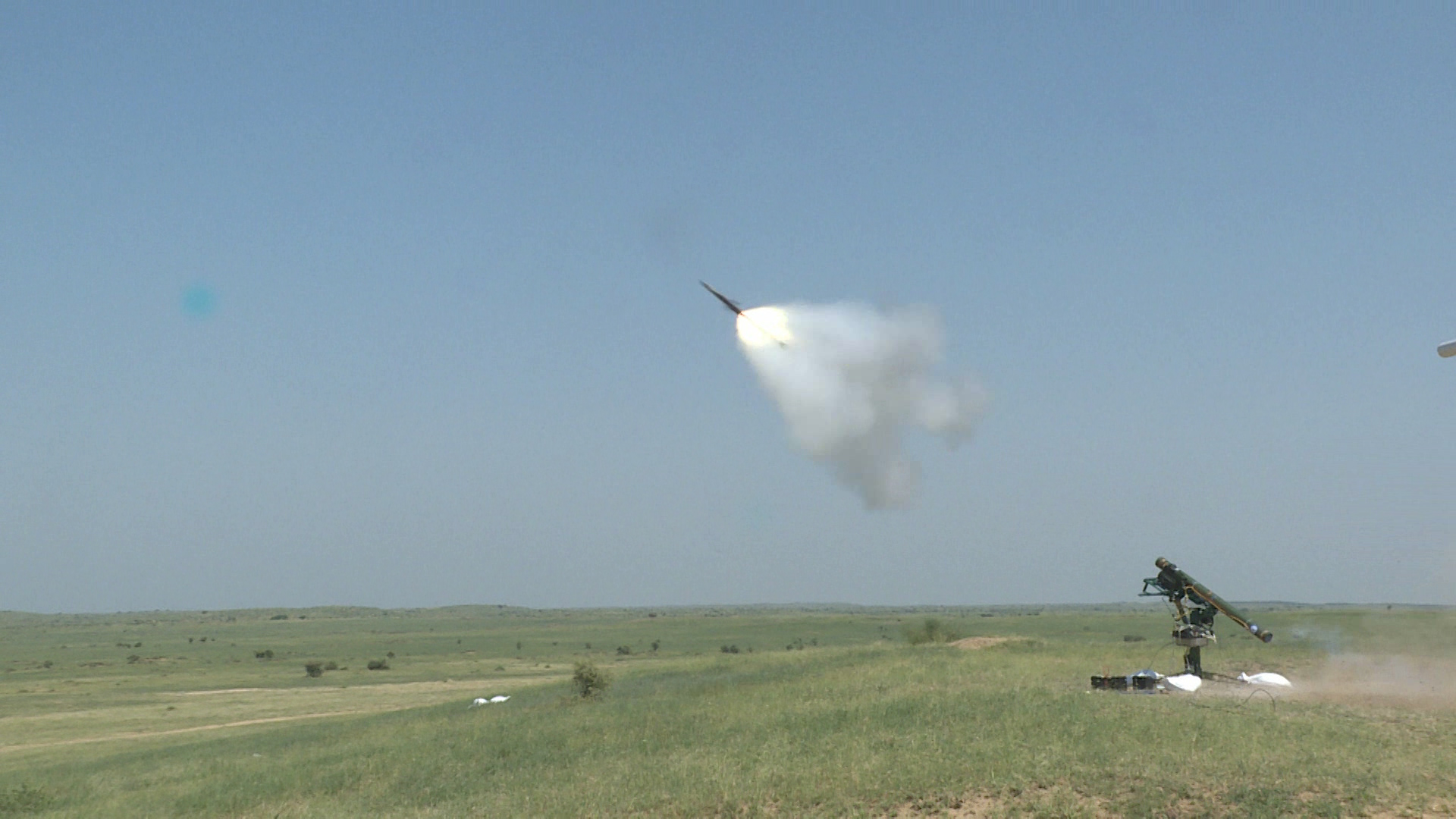
- 06 Oct 2024
In News:
DRDO completed development trials of the 4th Generation miniaturised Very Short Range Air Defence System (VSHORAD).
Key Details:
- Trial Location: Conducted at Pokhran Field Firing Ranges, Rajasthan.
- Importance: VSHORAD addresses the Indian Army's need to replace legacy Igla systems, with past efforts making little progress.
- Recent Procurement: Army acquired small volumes of Igla-S through emergency procurement.
- Production Collaboration: Two production agencies involved in Development cum Production Partner (DcPP) mode for VSHORAD missiles.
- Trial Dates: Successful tests held on October 3 and 4, 2024.
Key Performance Metrics:
- Maximum Range and Altitude: Interception against high-speed aerial targets.
- Hit-to-Kill Capability: Demonstrated success in engaging targets in various scenarios (approaching, receding, crossing).
System Overview:
- Type: Fourth generation man-portable air defence system (MANPADS).
- Developer: Research Centre Imarat (RCI) in collaboration with other DRDO labs and industry partners.
Capabilities:
- Designed to neutralise low altitude aerial threats at short ranges.
- Features include Dual-band IIR Seeker, miniaturised Reaction Control System, and integrated avionics.
- More portable and lightweight than existing missile systems in the Army's arsenal.
India-Maldives Defence Talks
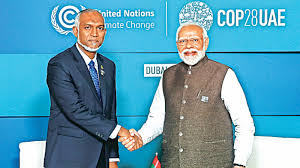
- 07 Sep 2024
In News:
- India and the Maldives held their first defence talks since India withdrew its military personnel early this year.
Significance of Talks:
- The dialogue is notable given recent tensions in bilateral relations. Relations soured after President Mohamed Muizzu's election on an "India Out" platform, leading to the withdrawal of Indian troops. The last defence cooperation dialogue was held in March 2023 under President Ibrahim Solih.
Discussion Topics:
-
- Expediting ongoing defence cooperation projects.
- Planning forthcoming bilateral military exercises.
- Enhancing high-level exchanges and capability development.
Context of Tensions:
-
- Mohamed Muizzu, who took office in November 2023, had called for the removal of Indian military personnel, a significant shift from the previous administration’s stance.
- India agreed to withdraw 80 military personnel between March and May 2024. Indian technical personnel now operate key equipment like helicopters and a Dornier aircraft in the Maldives.
Recent Developments:
-
- Maldives Foreign Minister Moosa Zameer visited India in May.
- President Muizzu attended PM Narendra Modi’s swearing-in ceremony in June.
- In August, Indian External Affairs Minister S. Jaishankar visited the Maldives to reaffirm bilateral ties.
Historical Defence Cooperation:
-
- India gifted a Dornier aircraft to the Maldives in 2020 and a patrol vessel in 2019.
- India provided a coastal radar system last year and laid the foundation for the 'Ekatha Harbour' project, enhancing Maldivian Coast Guard capabilities.
Ongoing Projects:
-
- Greater Male Connectivity Project (GMCP) - a $500 million initiative financed by India.
- Building a new Coast Guard base at Uthuru Thilafalhu (UTF) atoll.
- India’s grant for High Impact Community Development Projects (HICDPs).
Strategic Importance:
-
- For Maldives: India is a key security partner and crisis responder, with historical assistance during emergencies (Operation Neer, Vaccine Maitri). Maldives seeks to restore Indian tourist numbers, vital for its economy.
- For India: The Maldives is crucial to India's Neighbourhood First Policy and Vision SAGAR. Its strategic location between major Indian Ocean chokepoints makes it a vital partner for maritime security and countering China's influence.
Recent Changes:
-
- The Muizzu government decided not to renew a 2019 MoU for hydrographic surveying with India, ending joint hydrographic surveys conducted under the pact.
Travel and Trade:
-
- Both countries benefit from an open skies arrangement and visa-free access for tourism, medical, and business purposes
Inter-Services Organisations (ISOs) (Command, Control, and Discipline) Act
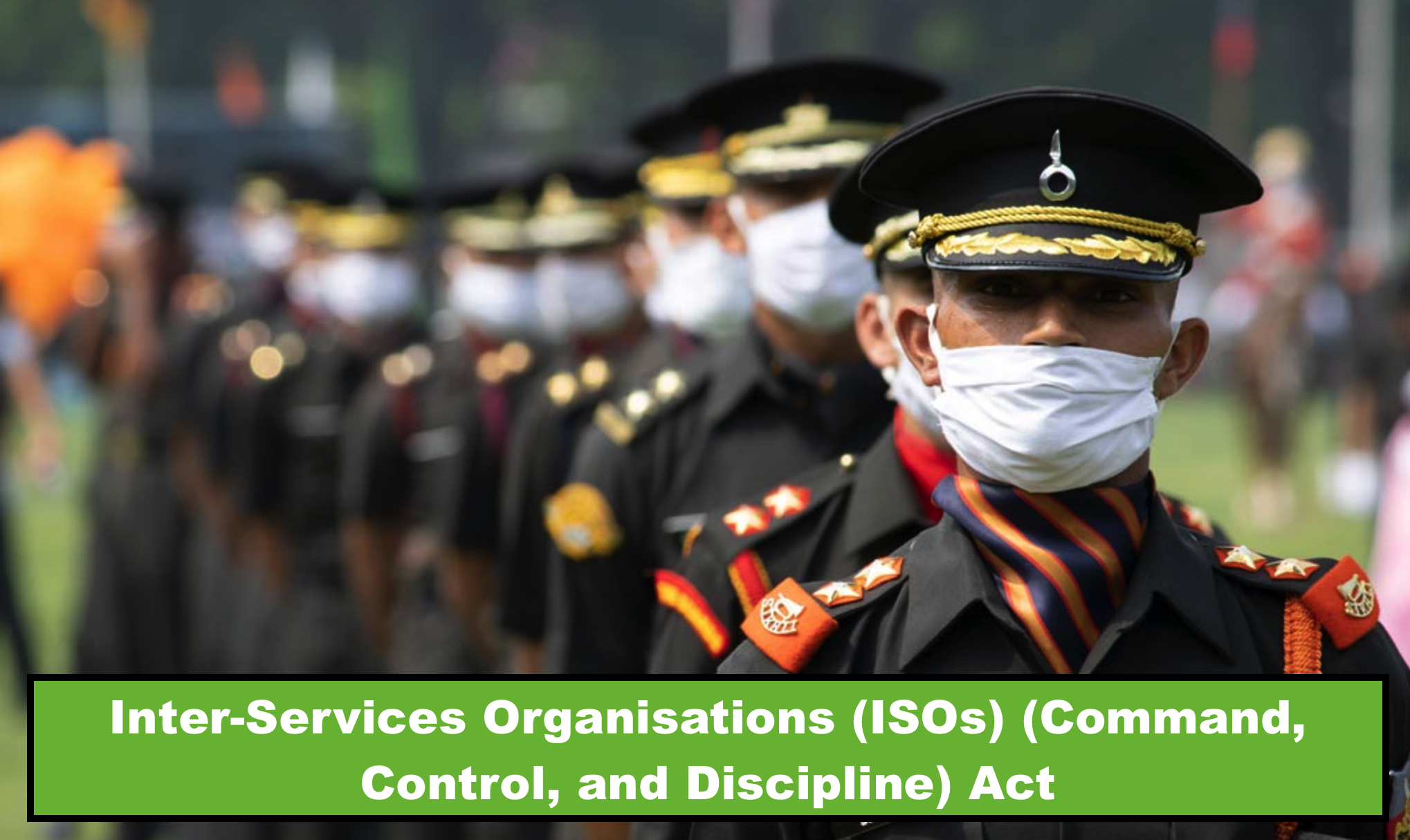
- 11 May 2024
Why is it in the News?
The Inter-Services Organisations (Command, Control and Discipline) Act has been notified in a gazette and has been enforced with effect from May 10, the Defence Ministry said recently.
About Inter-Services Organisations (ISOs) (Command, Control, and Discipline) Act:
- During the Monsoon Session of 2023, both houses of Parliament passed a bill aimed at enhancing the operational efficiency and coordination of Inter-Services Organisations (ISOs).
- These organisations comprise personnel from the Army, Air Force, and Navy, such as joint training institutions like the National Defence Academy, National Defence College (NDC), Defence Services Staff College (DSSC), and the Andaman and Nicobar Command (ANC).
Key Provisions of the ACT:
- Inter-Services Organisation Establishment: Existing Inter-Services Organisations will be considered constituted under the Act.
- The central government may establish an Inter-Services Organisation comprising personnel from at least two of the following services: the Army, Navy, and Air Force.
- Control of Inter-Services Organisations: The Act empowers the Commander-in-Chief or Officer-in-Command of an Inter-Services Organisation to exercise command and control over its personnel.
- They are responsible for maintaining discipline and ensuring the proper discharge of duties by service personnel.
- Supervision of an Inter-Services Organisation will be under the purview of the central government.
- Commander-in-Chief Eligibility: Officers eligible for appointment as Commander-in-Chief or Officer-in-Command include:
- A General Officer of the regular Army (rank above Brigadier),
- A Flag Officer of the Navy (rank of Admiral of the Fleet, Admiral, Vice-Admiral, or Rear-Admiral), or
- An Air Officer of the Air Force (a rank above Group Captain).
- Commanding Officer Appointment: The Act establishes a Commanding Officer responsible for leading a unit, ship, or establishment within the Inter-Services Organisation.
- The Commanding Officer carries out duties assigned by the Commander-in-Chief or Officer-in-Command.
- They have the authority to initiate disciplinary or administrative actions for personnel within the Inter-Services Organisation.
Need for the Act:
- Theaterisation Drive: The enactment aligns with the ongoing push for theaterisation, a vital military reform aimed at optimizing resources for future combat scenarios.
- Existing Framework Challenges: Currently, armed forces personnel are governed by separate laws— the Air Force Act, 1950, the Army Act, 1950, and the Navy Act, 1957—resulting in disjointed disciplinary powers.
- Under the current setup, only officers from the same service possess disciplinary authority over personnel governed by the respective Act, leading to command, control, and discipline challenges.
- Financial Implications: The present framework entails time-consuming processes and financial expenditures for personnel transfers.
- The proposed legislation seeks to remedy these challenges by enhancing discipline enforcement, expediting case resolutions, and potentially saving public funds.
Netzah Yehuda Battalion
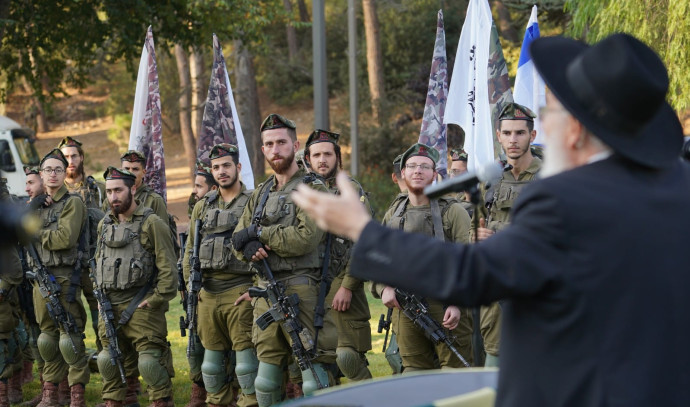
- 23 Apr 2024
Why is it in the News?
The US government may soon sanction a battalion of the Israeli Defence Forces (IDF) over alleged human rights violations, marking the first such move in the history of the two countries’ relations.
What is the Netzah Yehuda Battalion?
- The Netzah Yehuda battalion was set up in 1999 to accommodate the religious beliefs of ultra-Orthodox Jews and other religious nationalist recruits in the army.
- It was established to facilitate military service for these communities, accommodating their religious observances by scheduling prayer and study times, and restricting their interactions with female soldiers.
- The battalion is historically stationed in the occupied West Bank region and faces intense scrutiny for allegedly committing human rights violations against Palestinians.
- Netzah Yehuda came on the radar of United States agencies after the death of an elderly Palestinian-American man, who was detained by the battalion.
What is the Unit Accused Of?
- The United States called for a criminal investigation after Netzah Yehuda soldiers were accused of being involved in the death of a 78-year-old Palestinian-American, Omar Assad, who died of a heart attack in 2022 after he was detained and was later found abandoned at a building site.
- A Palestinian autopsy found Assad died from a stress-induced heart attack brought on by being manhandled.
- The case attracted unusual attention because of his dual nationality, his age, and a demand by the U.S. State Department for an investigation into his death.
- There have been several other incidents in recent years, some captured on video, in which Netzah Yehuda soldiers were accused of, or charged with, abusing Palestinian detainees.
- The battalion primarily operated in the West Bank before it was moved out of the territory in late 2022 after U.S. criticism.
- The unit has recently been serving in Gaza.
Defence Attaché (DA)
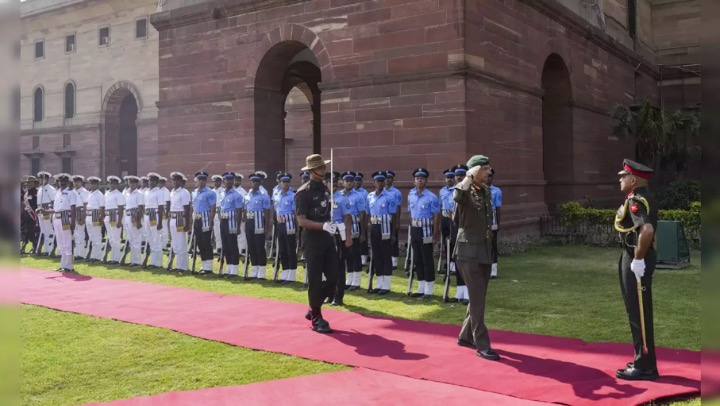
- 13 Apr 2024
Why is it in the News?
As India expands its presence in defense diplomacy and plans to deploy Defense Attachés to Indian missions in Africa, Armenia, and the Philippines, experts and experienced diplomats advise against simply "rationalizing" their numbers.
What’s a Defense Attaché?
- According to the Geneva Centre for the Democratic Control of Armed Forces (DCAF), a defence attaché is a member of the armed forces serving at an embassy as a “representative of his/her country’s defence establishment abroad and in this capacity enjoys the diplomatic status and immunity.
- The defence attaché’s work usually concerns bilateral military and defence relations.
- Some countries send attachés for security issues, such as migration or matters relating to police and justice.
- The defence attachés are also responsible for facilitating communication and cooperation between their home nation’s armed forces and the host country’s military.
- They act as military and/or security advisors to their country’s ambassador and embassy staff.
- They can also promote their home nation’s military weapons industry.
- Defence attachés collect and examine military intelligence, facilitate military cooperation pacts, and give an evaluation of security issues to their home country’s government.
- They also act as a link between diplomats and the military.
India to Send Defence Attachés to New Countries:
- India has started dispatching defence attachés to many new countries, while reportedly downsizing the military personnel at its missions in some other nations.
- 15-16 new attaches from the Indian Navy, the Indian Air Force (IAF), and the Indian Army are being posted to Poland, the Philippines, Armenia, and the African countries of Tanzania, Mozambique, Djibouti, Ethiopia, and Ivory Coast.
- In the next phase, 10 entirely new defence wings will be created in different countries, with a particular focus on nations to which arms can be exported.
Why the Other Countries Matter?
- India dispatching a defense attaché to Poland, which is a part of the European Union (EU) and has emerged as an important security partner in Europe in recent years, is also significant.
- The EU posted a military attaché to its mission in India for the first time last year. India’s move to do the same in Poland is “reflective of the desire to expand two-way defence ties.
- Armenia has become a major exporter of India’s arms.
- India has already inked deals with the Asian country for Pinaka rockets, Akash missiles, ammunition, and multi-barrel rocket launchers, with some of them coming amid Armenia’s clash with Azerbaijan over Nagorno-Karabakh.
- Armenia has shown interest in expanding its defence ties with India.
- China’s military assertiveness in the South China Sea has prompted India to grow military ties with ASEAN countries.
- India’s decision to send defence attachés for the first time to the Philippines comes in the wake of the sale of Indian arms to Manila.
- India signed a $375 million deal with the Philippines in 2022 to supply three batteries of the BrahMos missile and will soon start the delivery of the missiles to the Southeast Asian country.
Defence upgrade roadmap: Apex body led by Prime Minister, MoD sci-tech unit (Indian Express)
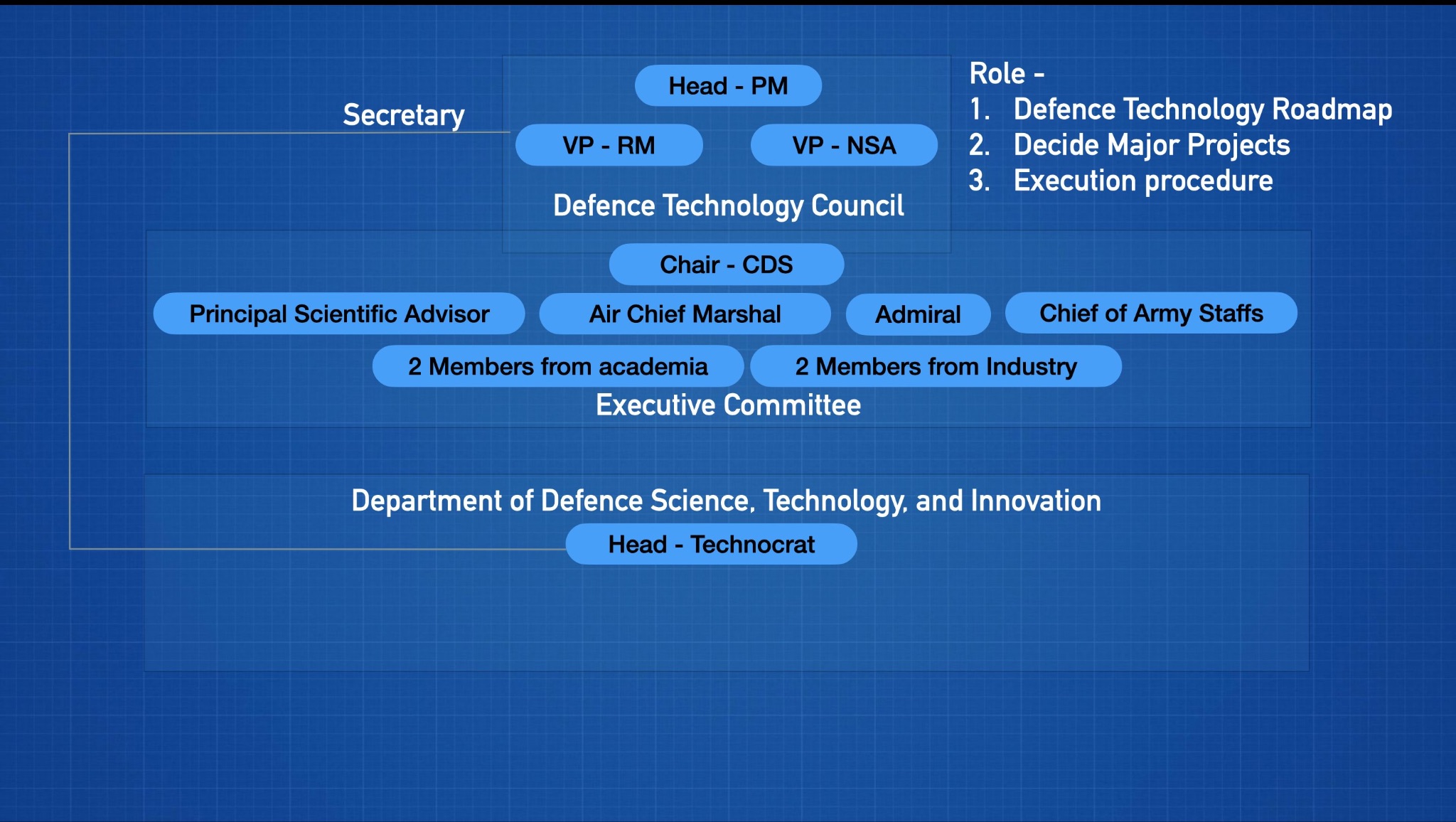
- 17 Jan 2024
Why is it in the News?
The expert committee, led by Vijay Raghavan, the former principal scientific advisor, proposed that the country's defence technology roadmap be overseen by an apex body called the Defence Technology Council, with the Prime Minister serving as its chair.
The context in which the Vijay Raghavan Committee was Established:
- Formed by the government last year, the committee was tasked with assessing the functioning of the Defence Research and Development Organisation (DRDO).
- The committee's report, submitted this month, follows the government's initiative to address significant delays in various DRDO projects.
- This scrutiny comes in response to concerns raised by the Parliamentary Standing Committee on Defence, which noted that 23 out of 55 mission mode projects faced substantial delays.
- In 2022, the Comptroller and Auditor General (CAG) highlighted that 67% of the 178 scrutinized projects failed to meet their initially proposed timelines.
- The CAG attributed these delays to factors such as persistent alterations in design specifications, delays in completing user trials, and delays in placing supply orders.
- The prevalent practice of seeking multiple extensions for projects, particularly those designated under the Mission Mode category, has been identified as undermining the intended purpose of these initiatives.
Major Recommendations of the Vijay Raghavan Committee:
- Establishment of the Defence Technology Council: Headed by the Prime Minister, with the Defence Minister and the National Security Advisor serving as Vice Presidents.
- This council is envisioned to play a pivotal role in charting the nation's defence technology roadmap, deciding on significant projects, and overseeing their execution.
- An executive committee, led by the Chief of Defence Staff, is proposed, featuring members such as the Principal Scientific Advisor, the three service chiefs, their vice chiefs, and representation from academia and industry.
- Creation of the Department of Defence Science, Technology, and Innovation: To be led by a technocrat, this department aims to foster defence research and development within the academic and startup ecosystem.
- Additionally, it is designated as the secretariat for the Defence Tech Council chaired by the Prime Minister.
- Drawing expertise from scientists in the Defence Research and Development Organisation (DRDO) and academia, it will compile a knowledge repository on production expertise, conduct background research for the Defence Tech Council, and contribute to informed decisions on technology production.
- Restructuring of DRDO's Focus: Recommends that DRDO concentrate on its original mission of research and development for defence purposes.
- The suggestion is for DRDO to abstain from involvement in productization, production cycles, and product management, tasks deemed more suitable for the private sector.
- Currently, DRDO is engaged in all aspects of its projects, spanning from research and development to production.
iDEX innovators to exhibit futuristic technologies at Vibrant Gujarat summit (ET)

- 08 Jan 2024
Why is it in the News
The Ministry of Defence on Sunday said that Innovations for Defence Excellence-Defence Innovation Organization (iDEX-DIO) will participate in the 10th edition of the Vibrant Gujarat Summit from January 10 to 12 in Gandhinagar.
About iDEX:
- iDEX (Innovations for Defence Excellence), the flagship scheme of the Ministry of Defence, Govt of India launched by Prime Minister Modi in 2018.
- The objective of the scheme is to cultivate an innovation ecosystem in the Defence and Aerospace sector by collaborating with startups, innovators, MSMEs, incubators, and academia.
- iDEX offers grants and support for R&D with significant potential for future adoption in Indian defense and aerospace.
- It is currently engaged with around 400+ Startups and MSMEs, till now procurement of 31 items worth over Rs 2000 Cr. has been cleared.
- Recognized as a game-changer in the defense ecosystem, iDEX has received the PM Award for Innovation in the defense sector.
What is the Vibrant Gujarat Summit?
- The Government of Gujarat organizes the Vibrant Gujarat Global Summit, also known as Vibrant Gujarat, a biennial global business event held in the state of Gujarat, India.
- It attracts business leaders, investors, corporations, thought leaders, and policymakers, serving as a platform to understand and explore business opportunities in Gujarat.
- Launched in 2003 and now held every two years, the summit aims to promote Gujarat as an attractive investment destination, fostering partnerships and collaborations across various sectors.
- Industry associations, both nationally and internationally, support the summit, making it one of Gujarat's crucial economic forums.
- The event creates a platform for business leaders, policymakers, and investors to explore opportunities for investment, collaboration, and partnership in sectors such as energy, manufacturing, infrastructure, information technology, agriculture, healthcare, and more.
- It facilitates discussions, negotiations, and agreements in these key sectors.
- The Tenth edition of Vibrant Gujarat Global Summit is being held from 10 to 12 January 2024 in Gandhinagar, Gujarat.
- Its theme is 'Gateway to the Future'.
- This Tenth Edition of the Summit will celebrate “20 Years of Vibrant Gujarat as the Summit of Success”.
- There are 34 Partner countries and 16 Partner organizations for this year’s Summit.
- Further, the Ministry of Development of North-Eastern Region will utilize the Vibrant Gujarat platform to showcase investment opportunities in the North-Eastern regions.
INS Beas to Be Upgraded (PIB)
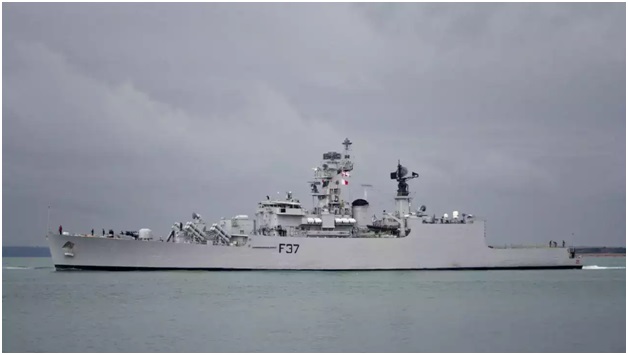
- 16 Oct 2023
Why in the News?
The Ministry of Defence signed a contract on October 16, 2023, in New Delhi for the life Upgrade and Re-Powering of "INS Beas" with Kochi-based M/S Cochin Shipyard Limited (CSL) at an overall cost of Rs. 313.42 Cr.
Context:
- The INS Beas is gaining attention as the first Brahmaputra Class Frigate to undergo a transition from steam to diesel propulsion.
- The completion of its Mid-Life Upgrade and Re-Powering in 2026 is expected to result in the INS Beas joining the active fleet of the Indian Navy, equipped with a modernized weapon suite and upgraded combat capabilities.
About INS Beas:
- INS Beas (F37) stands as a Brahmaputra-class frigate within the Indian Navy, constructed at the Garden Reach Shipbuilders and Engineers (GRSE) in Kolkata.
- Commissioned on July 11, 2005, it is the second ship in the Indian Navy to carry this name, with the first being a Leopard-class frigate commissioned in 1960 and decommissioned in 1992.
- Role: Functioning as a versatile warship, INS Beas is proficient in various missions, encompassing anti-aircraft, anti-submarine, and anti-ship warfare.
- Additionally, it plays a crucial role in patrolling, surveillance, and safeguarding India's maritime interests.
- Features: The ship's design and construction are wholly Indian, derived from the modification of the Godavari-class frigate.
- With a displacement of about 3,850 tonnes, INS Beas boasts a length of 126 meters (413 feet) and a beam width of 14.5 meters (48 feet).
- Propulsion: Powered by 2 steam turbines, INS Beas demonstrates remarkable agility, capable of reaching speeds exceeding 30 knots during naval operations.
- Technology: Equipped with modern sensor suites and matching weapon systems, the ship embodies cutting-edge technology to enhance its operational capabilities.
